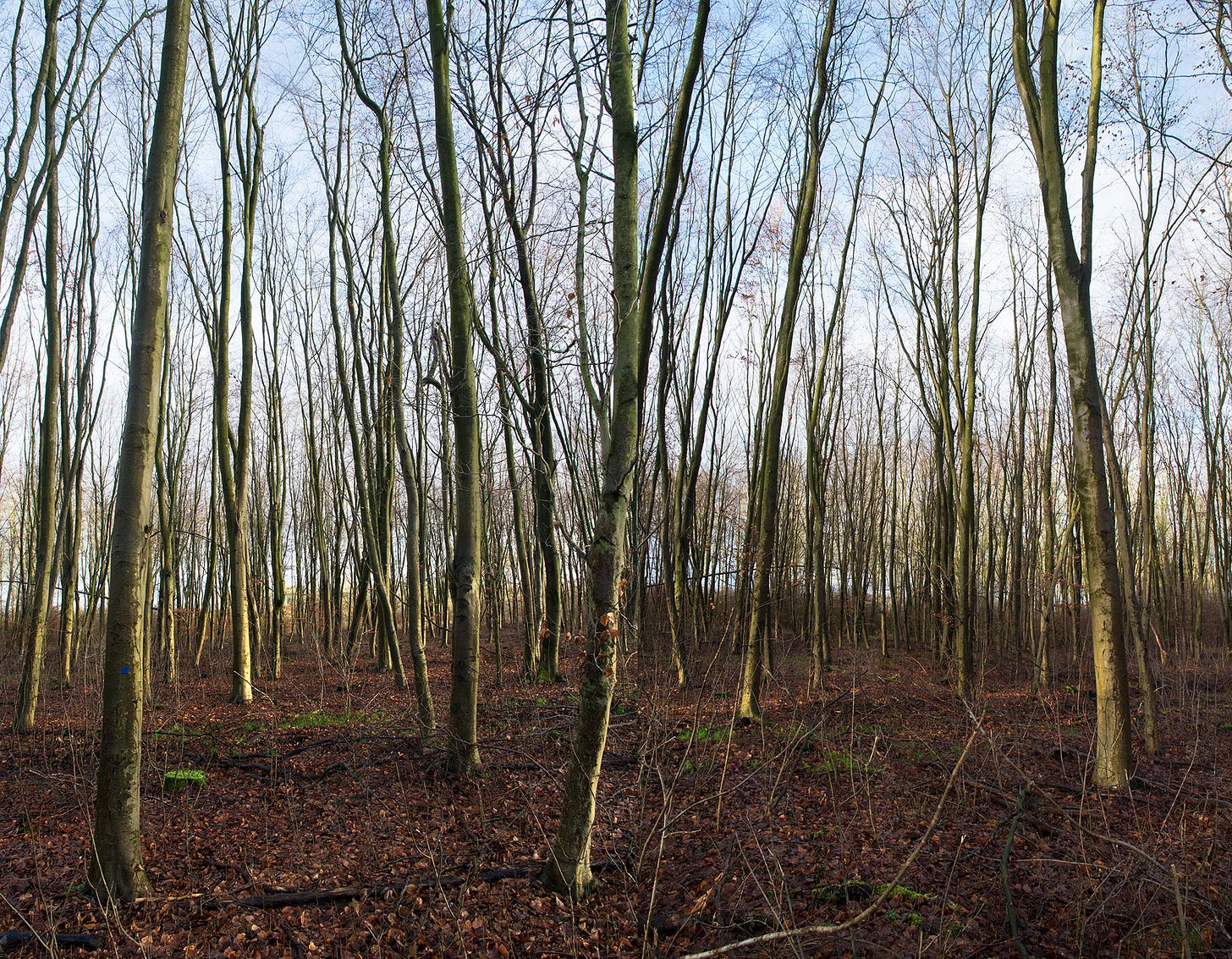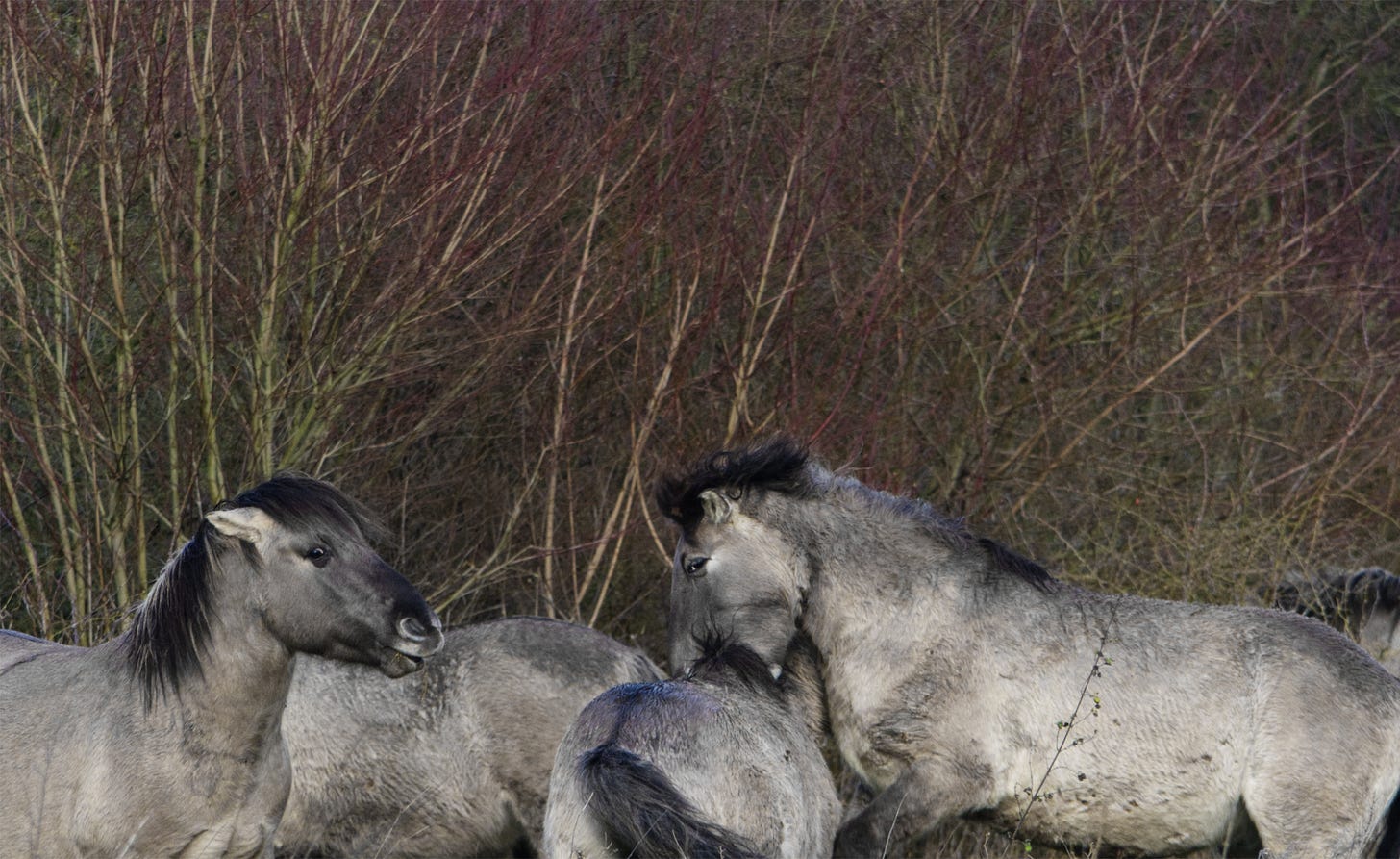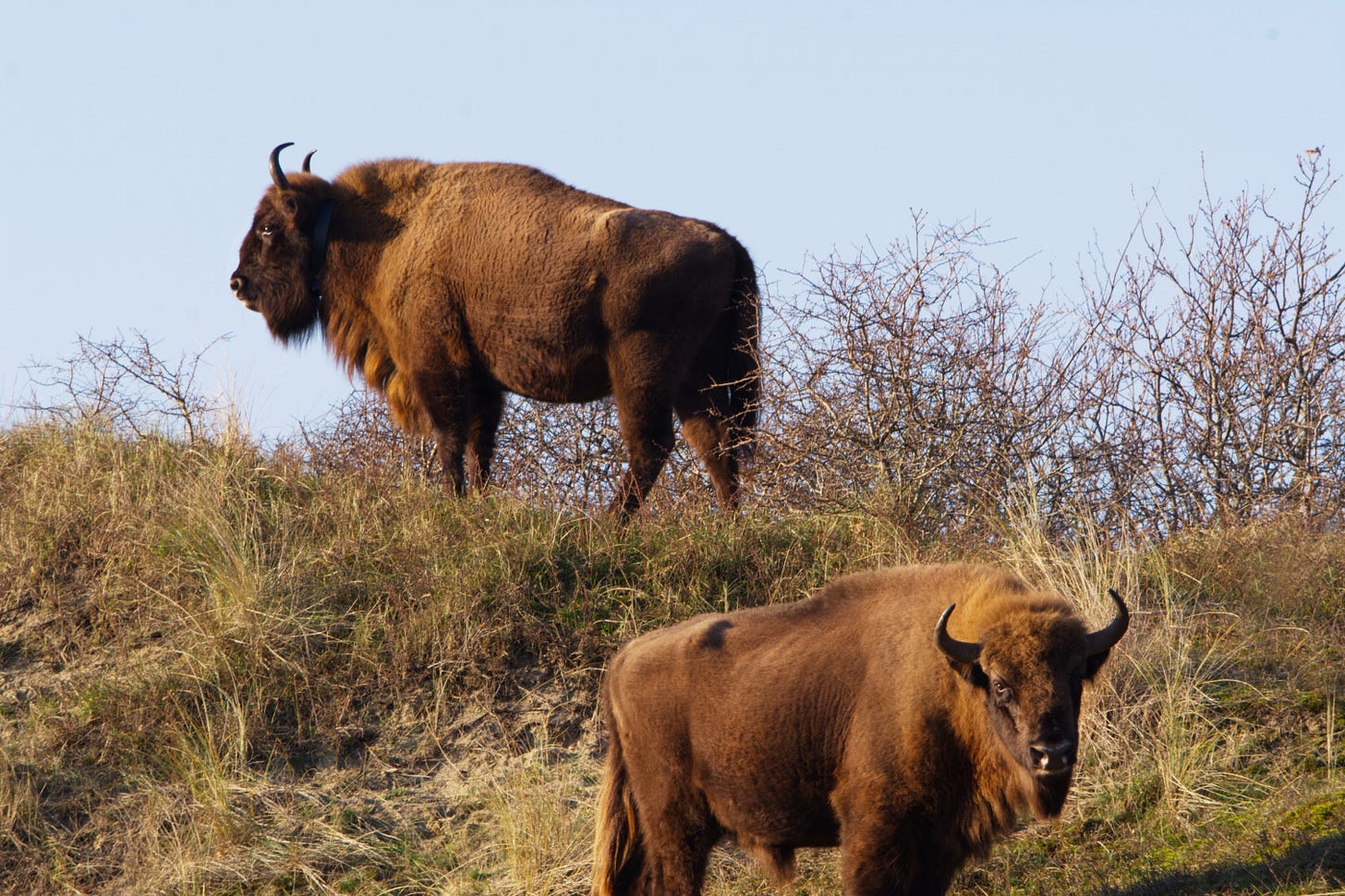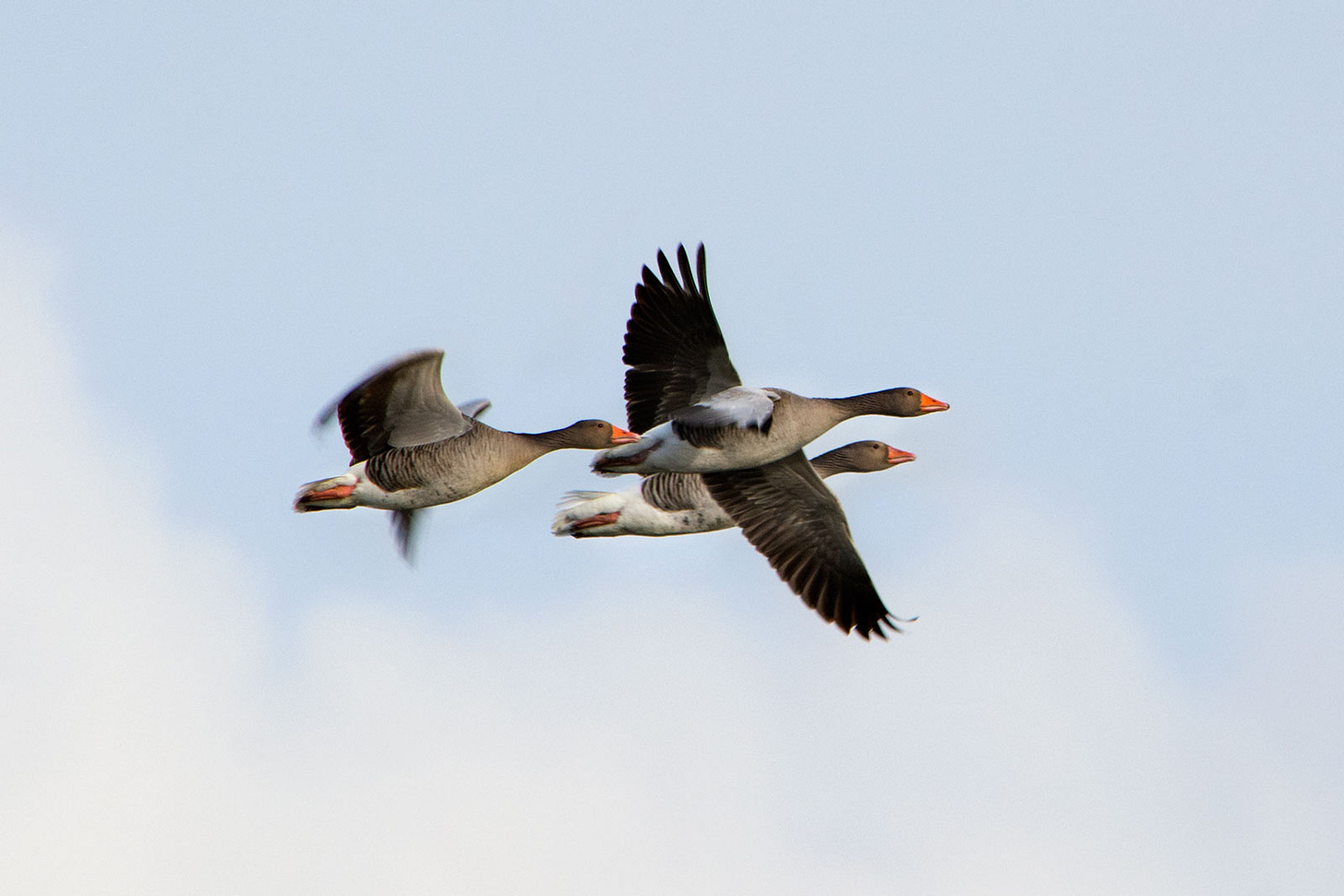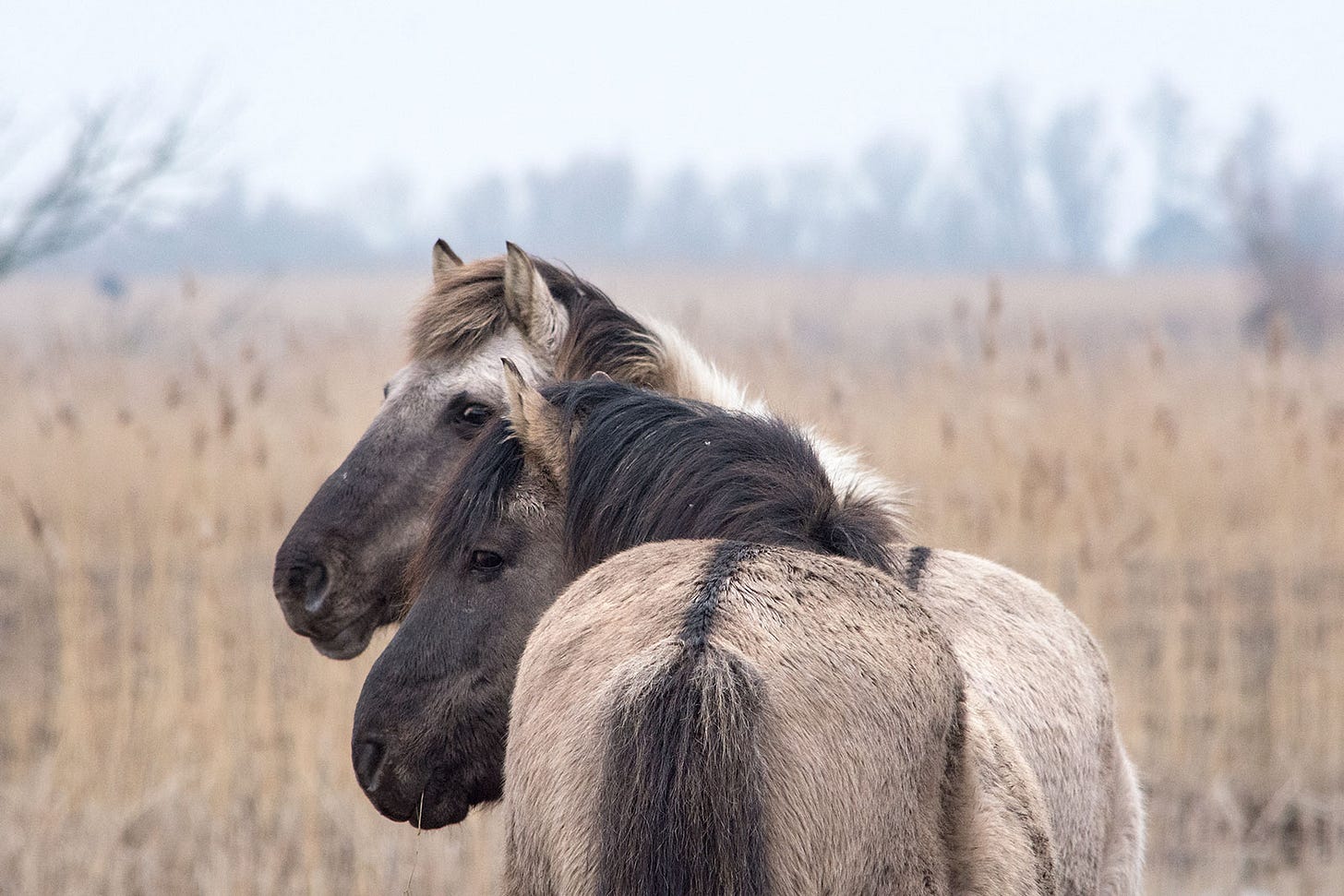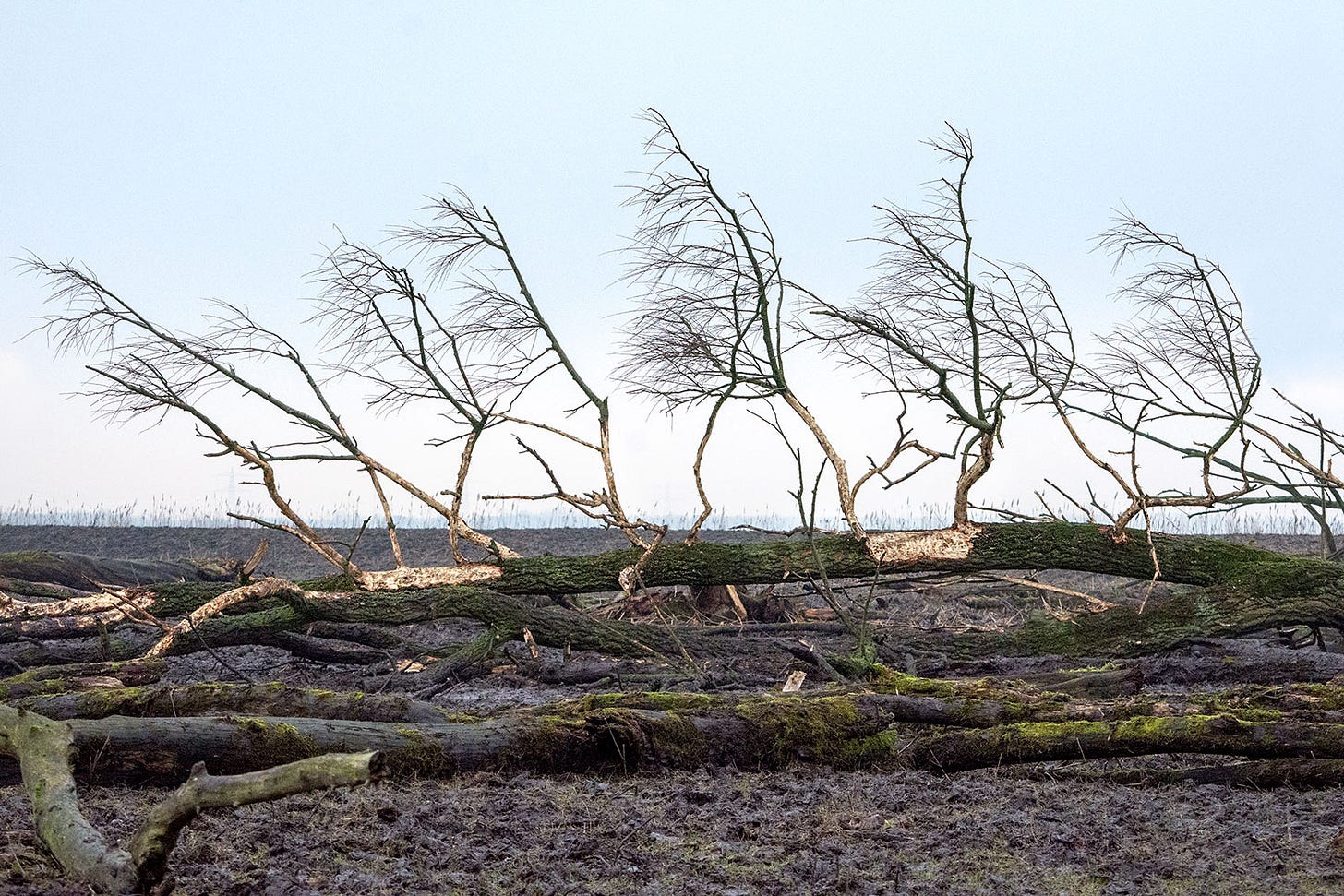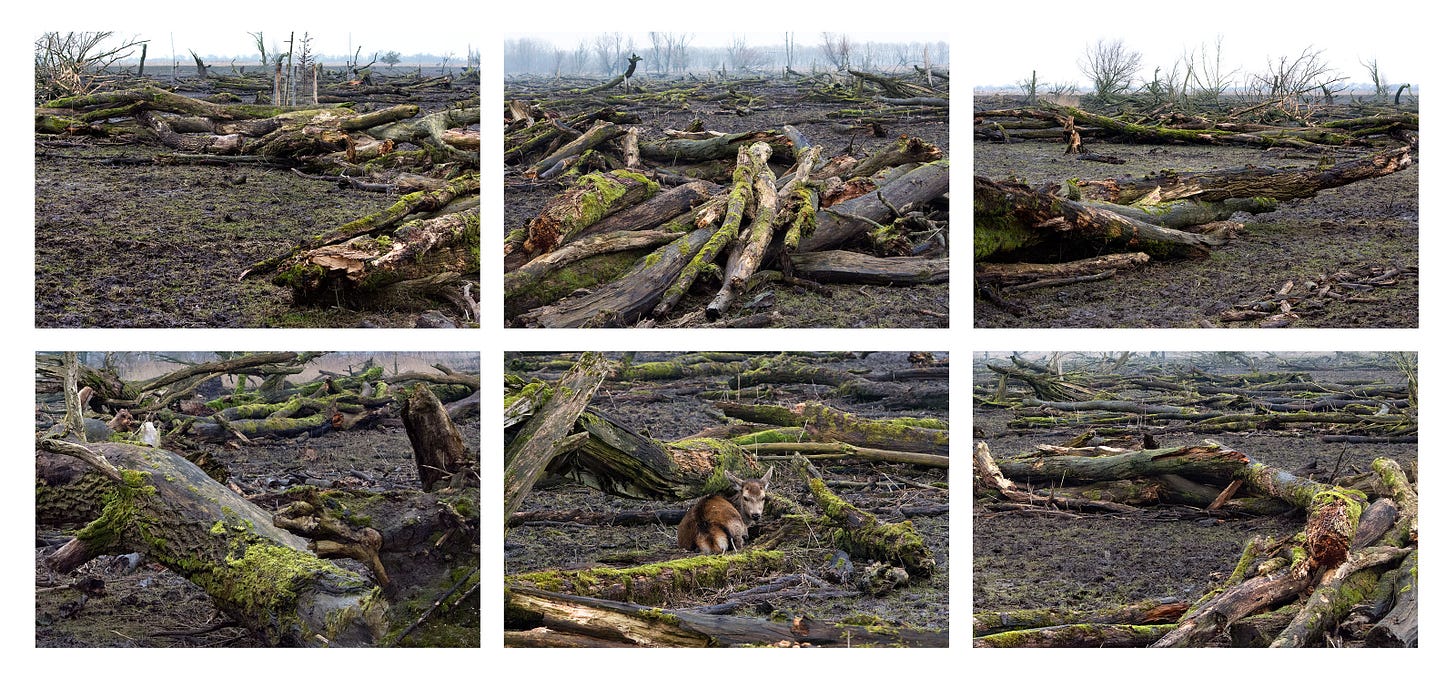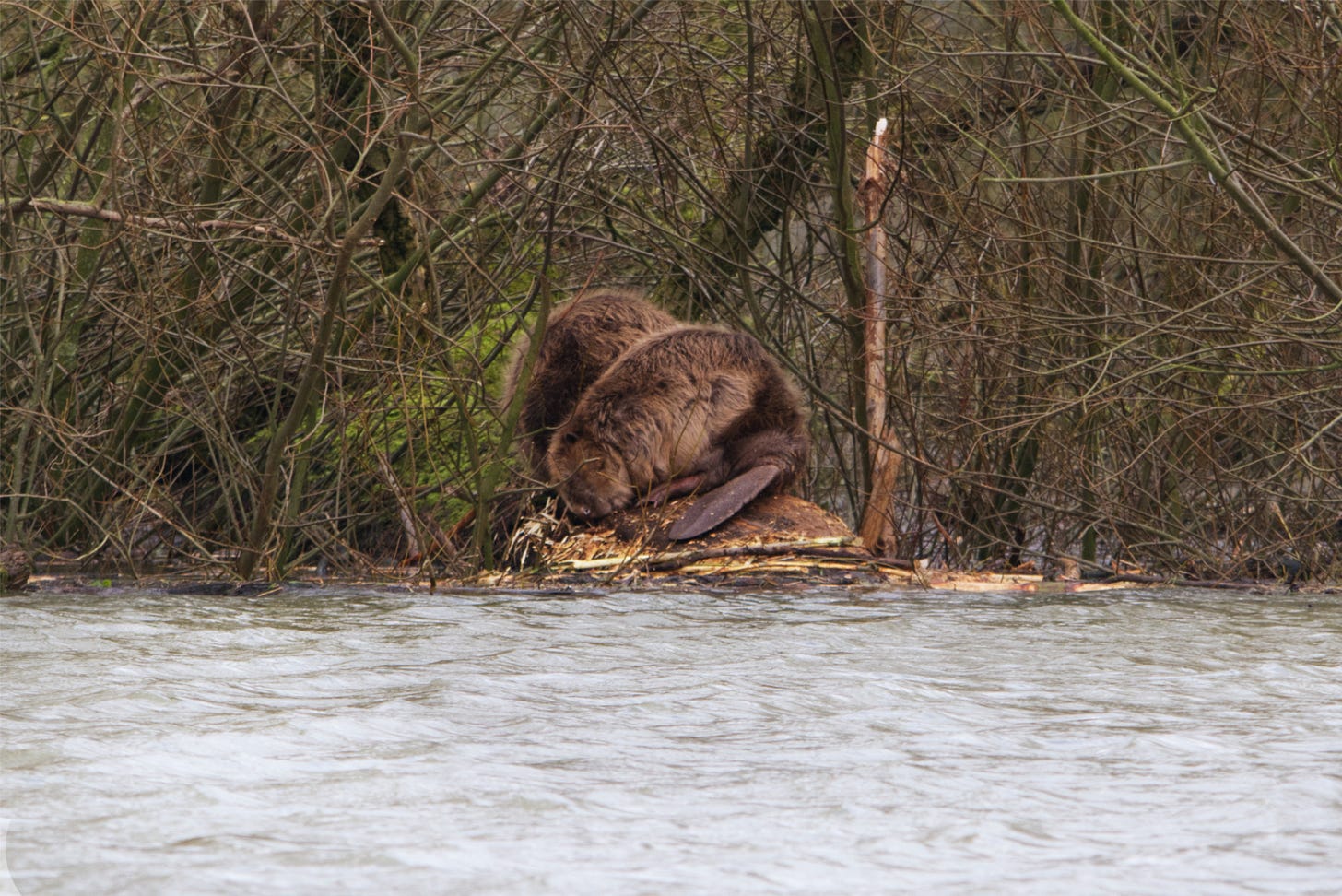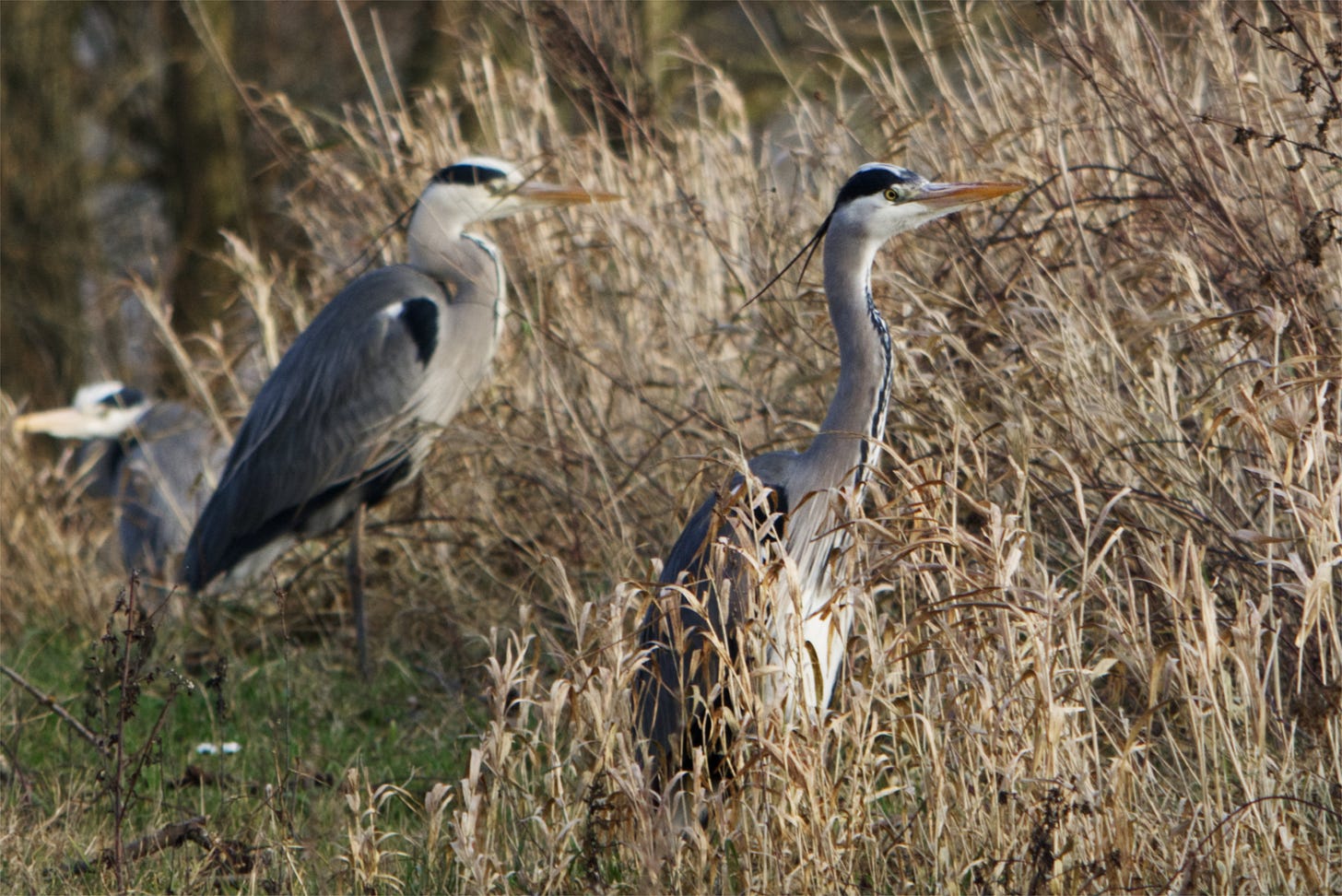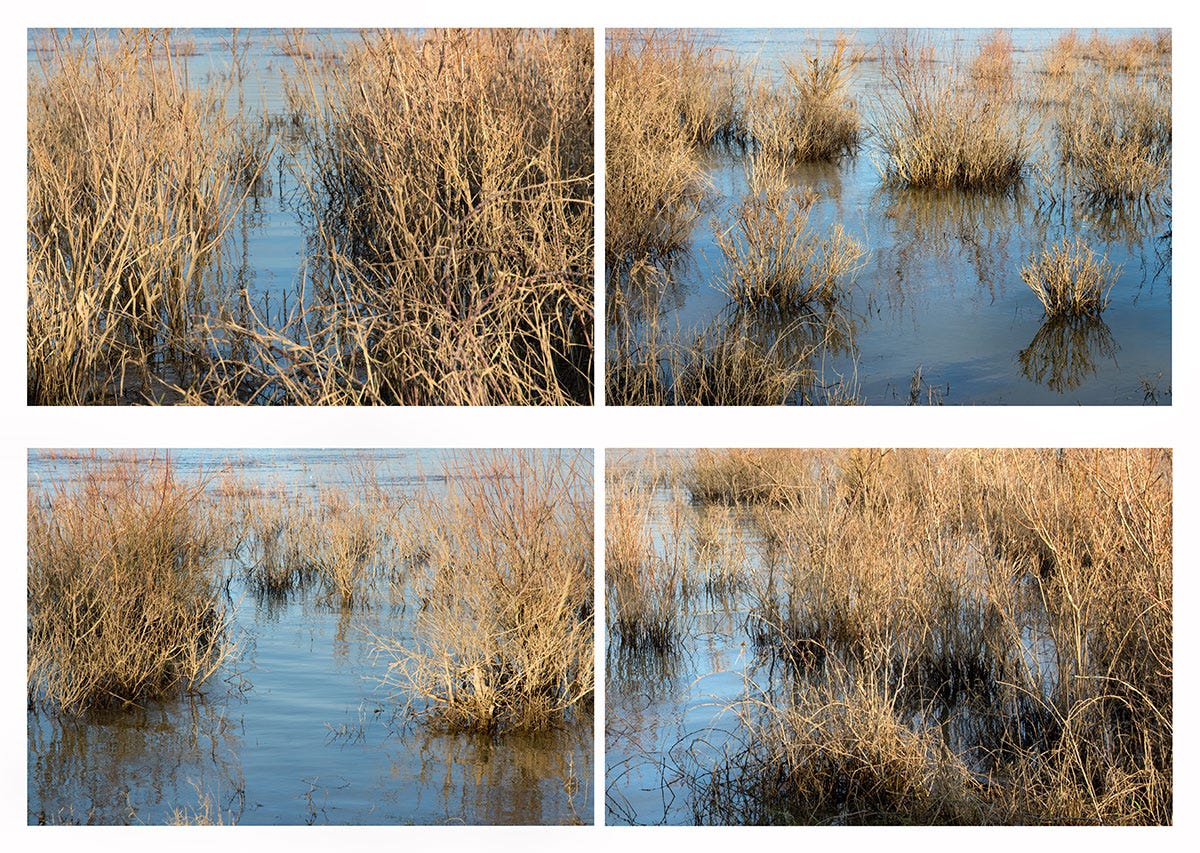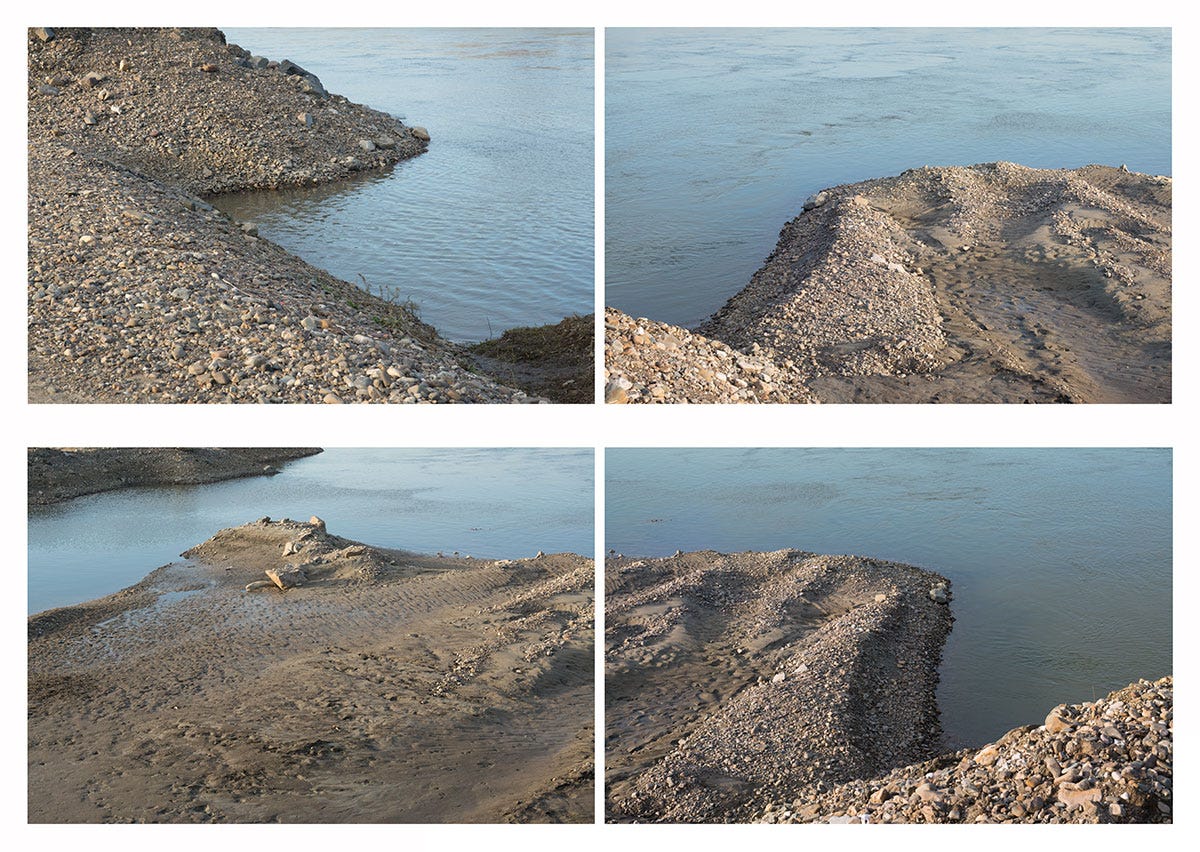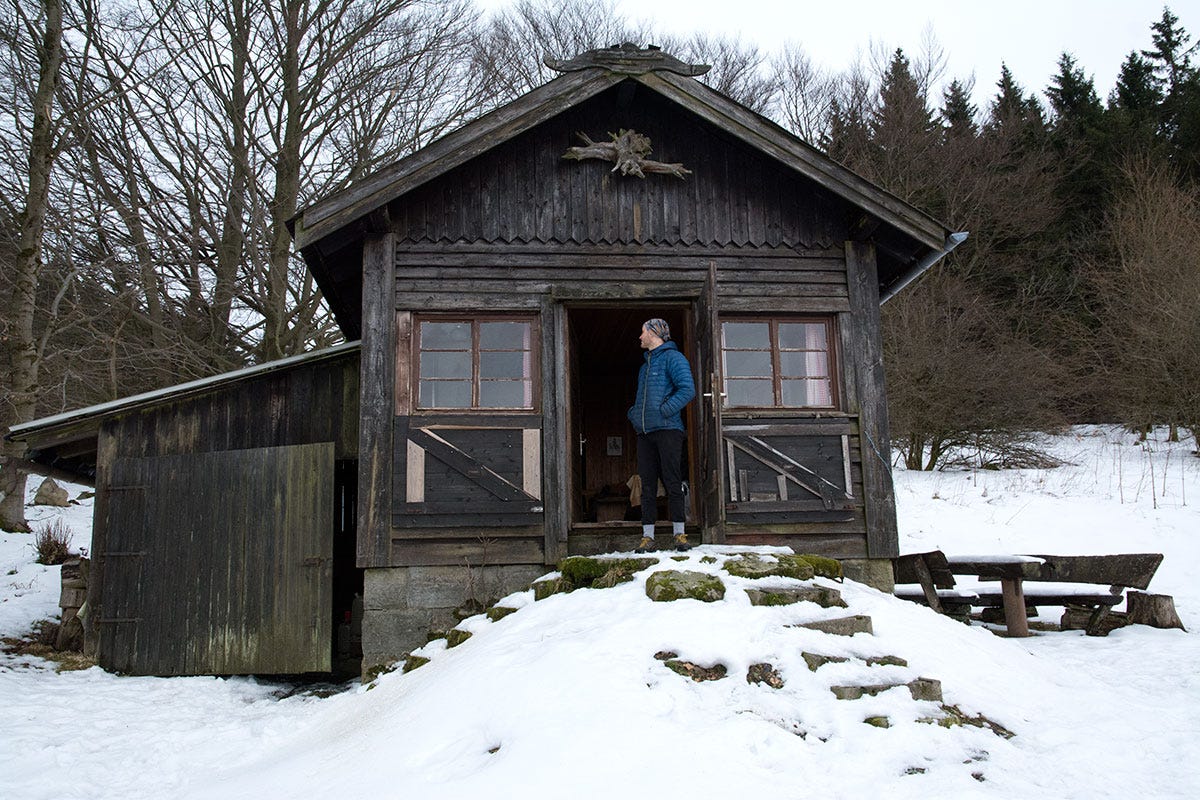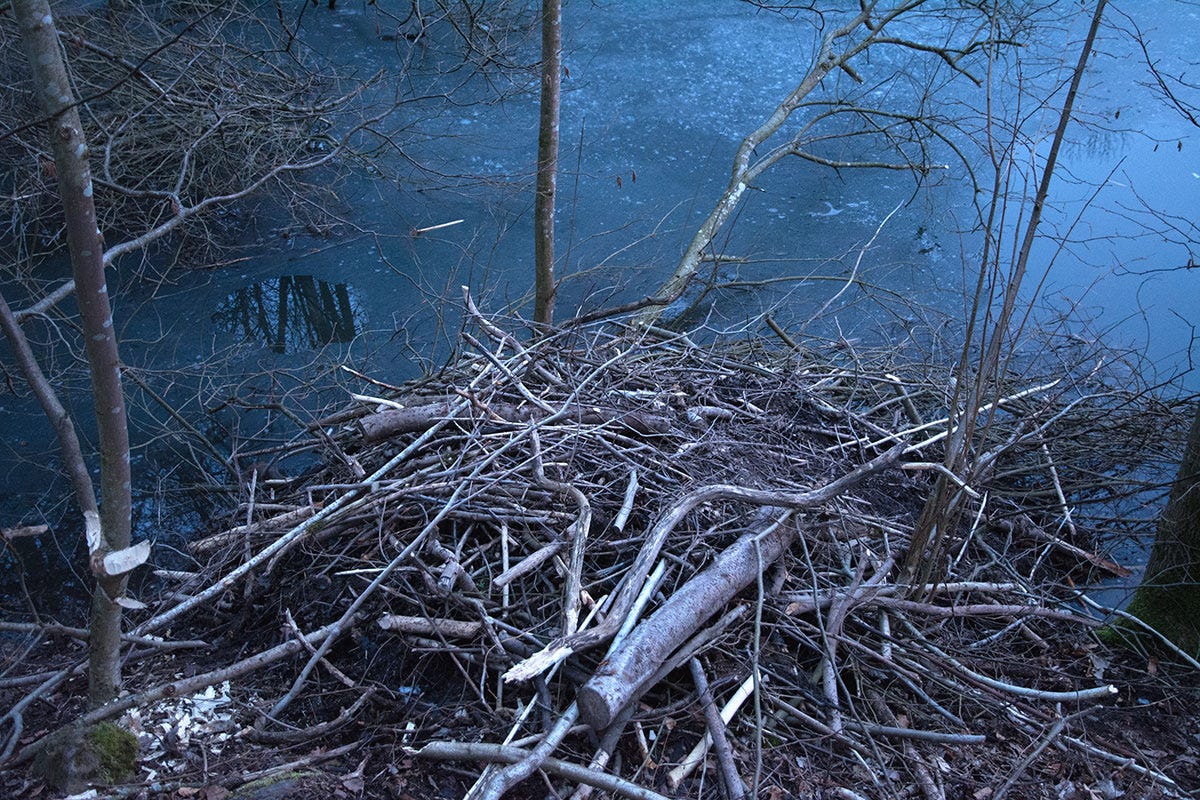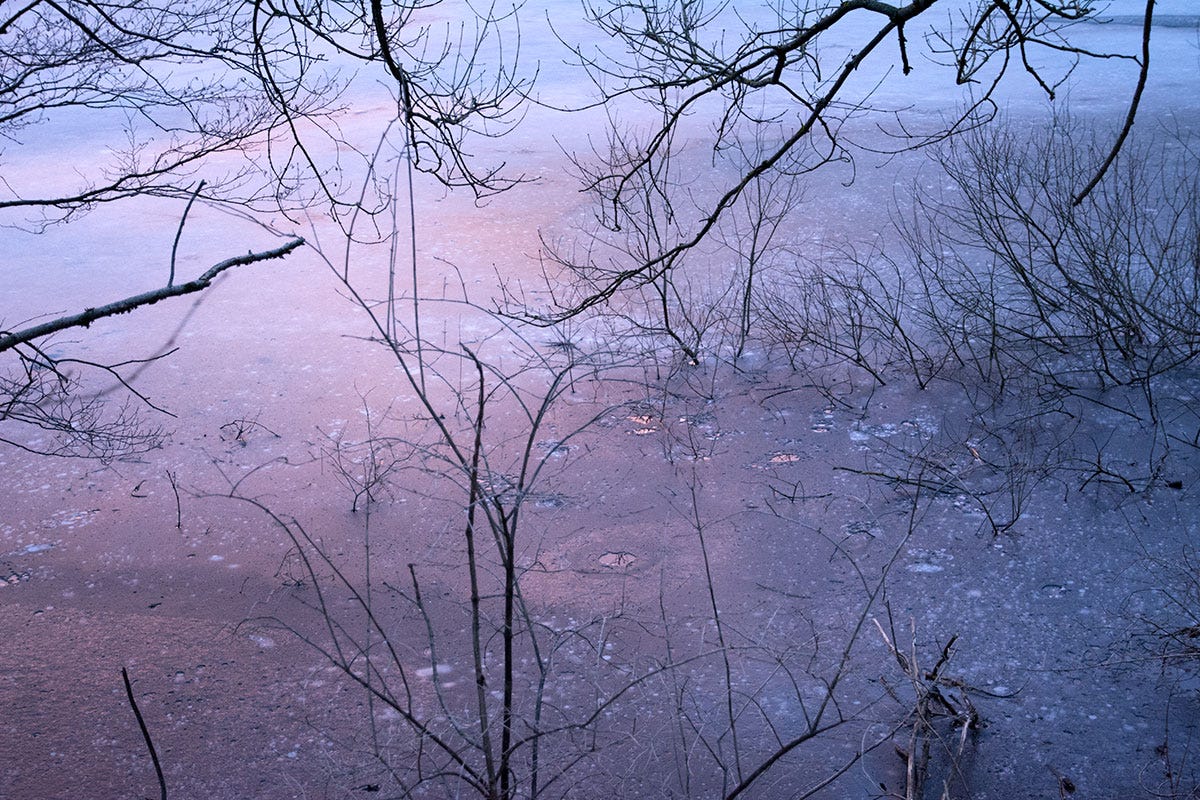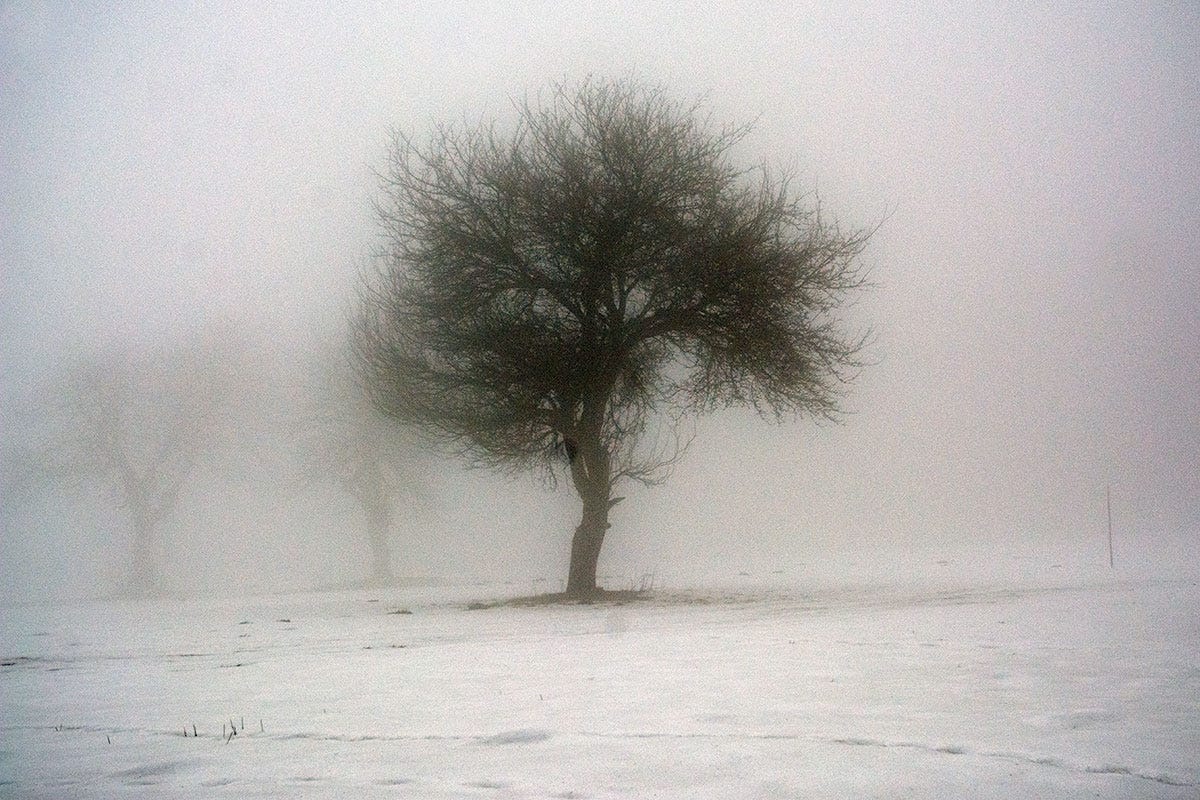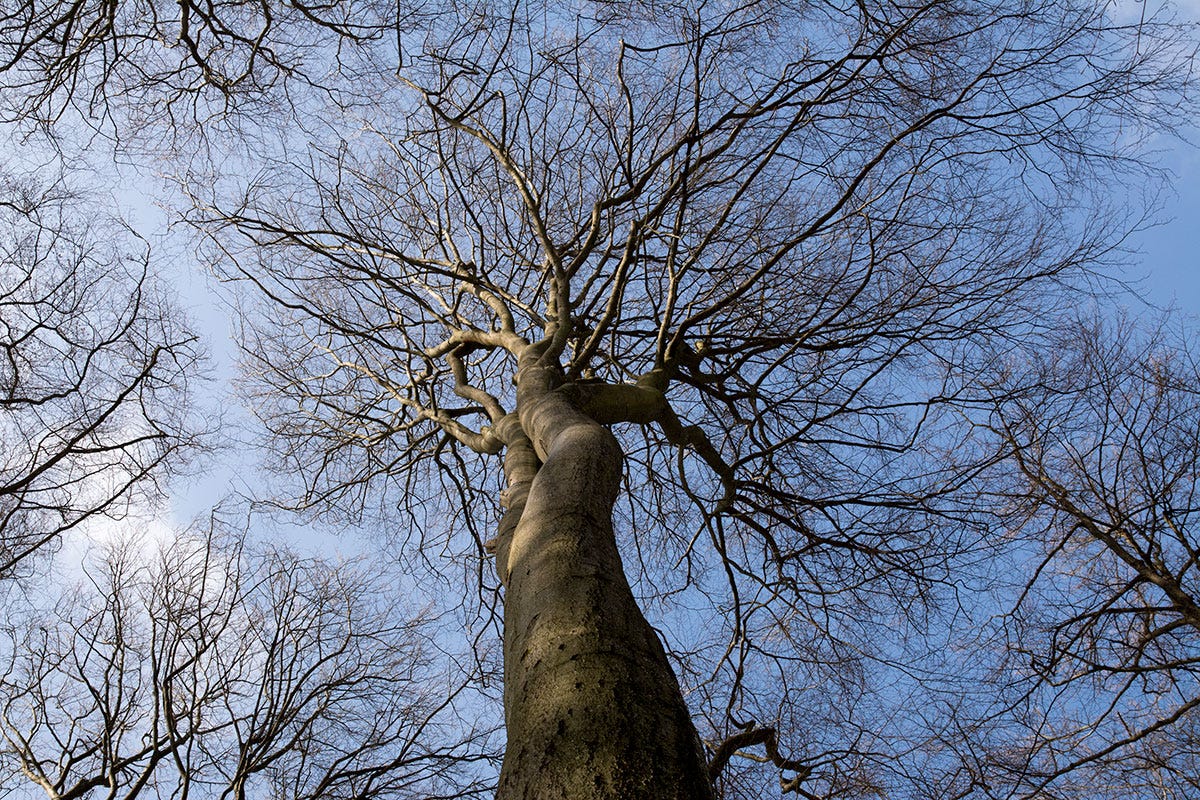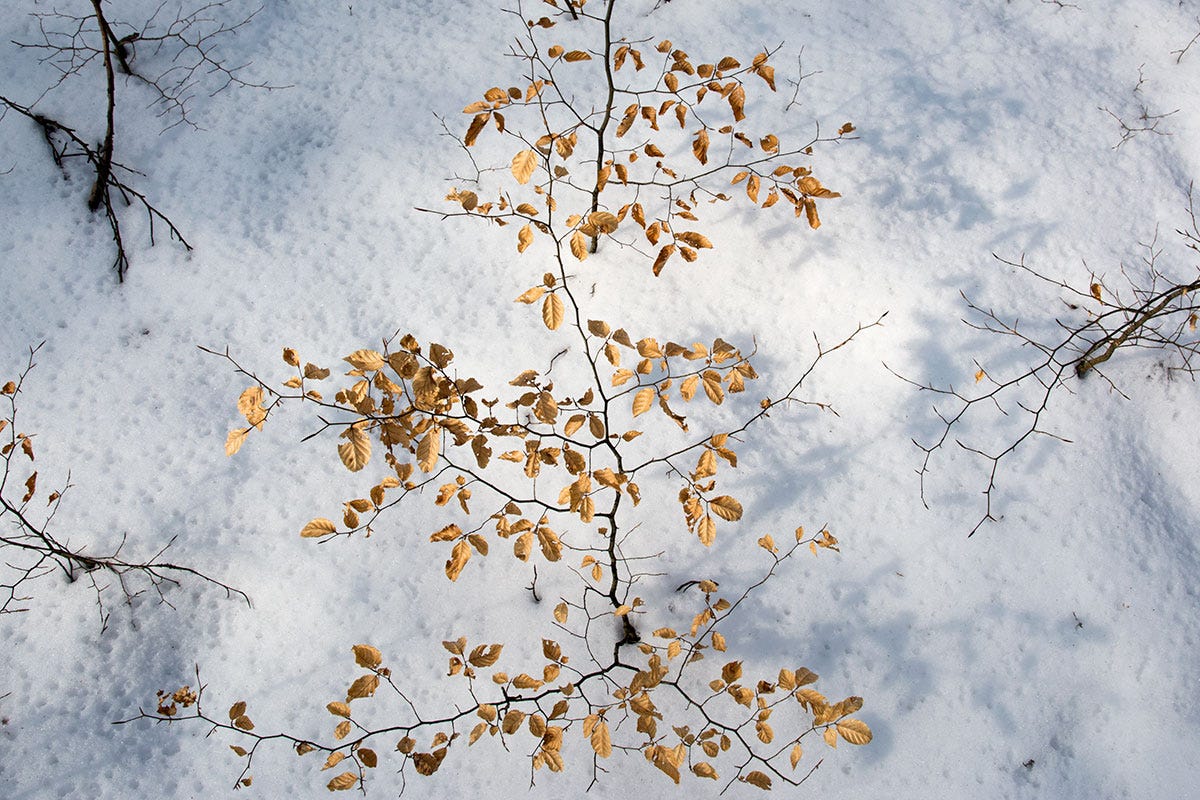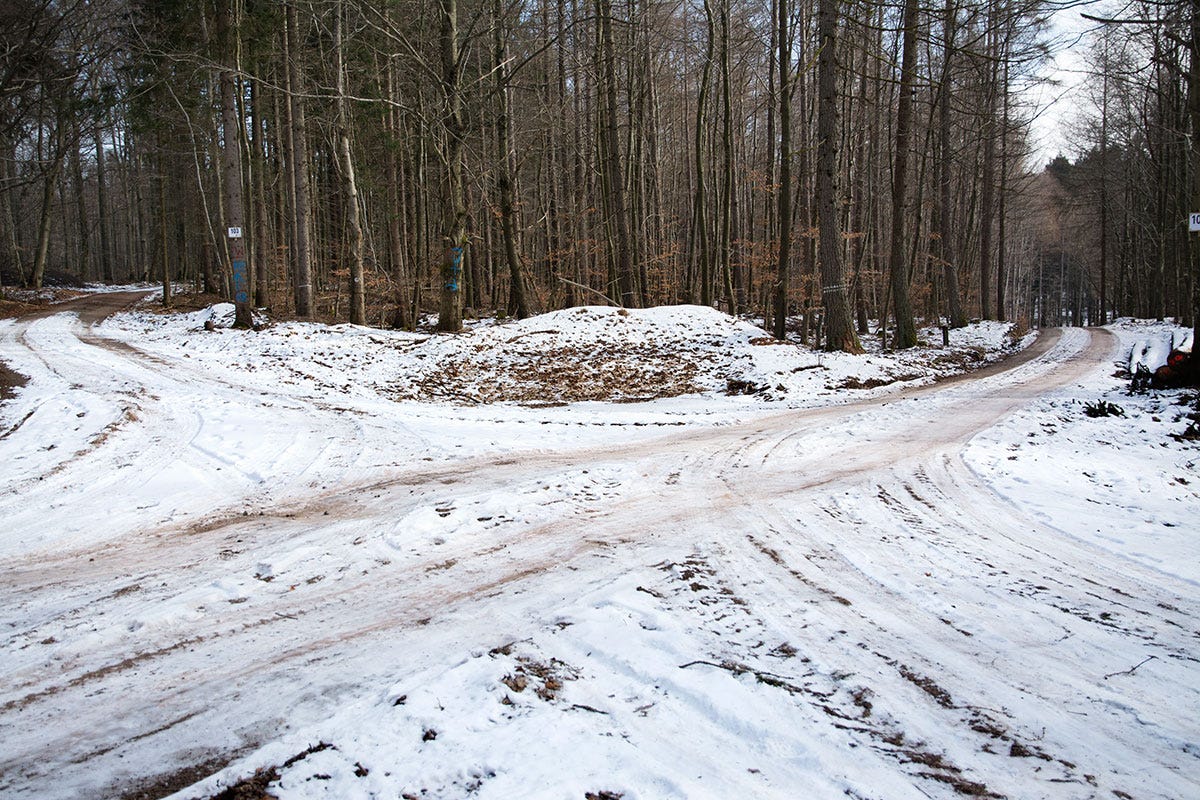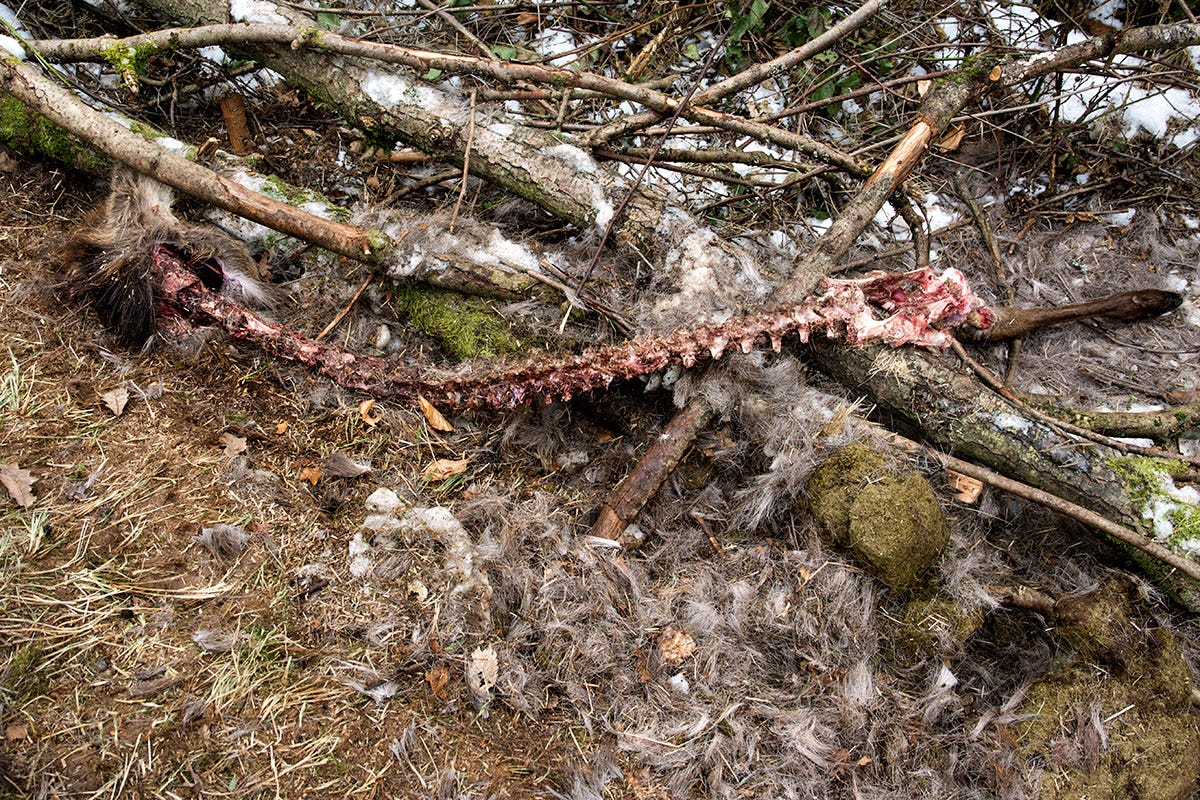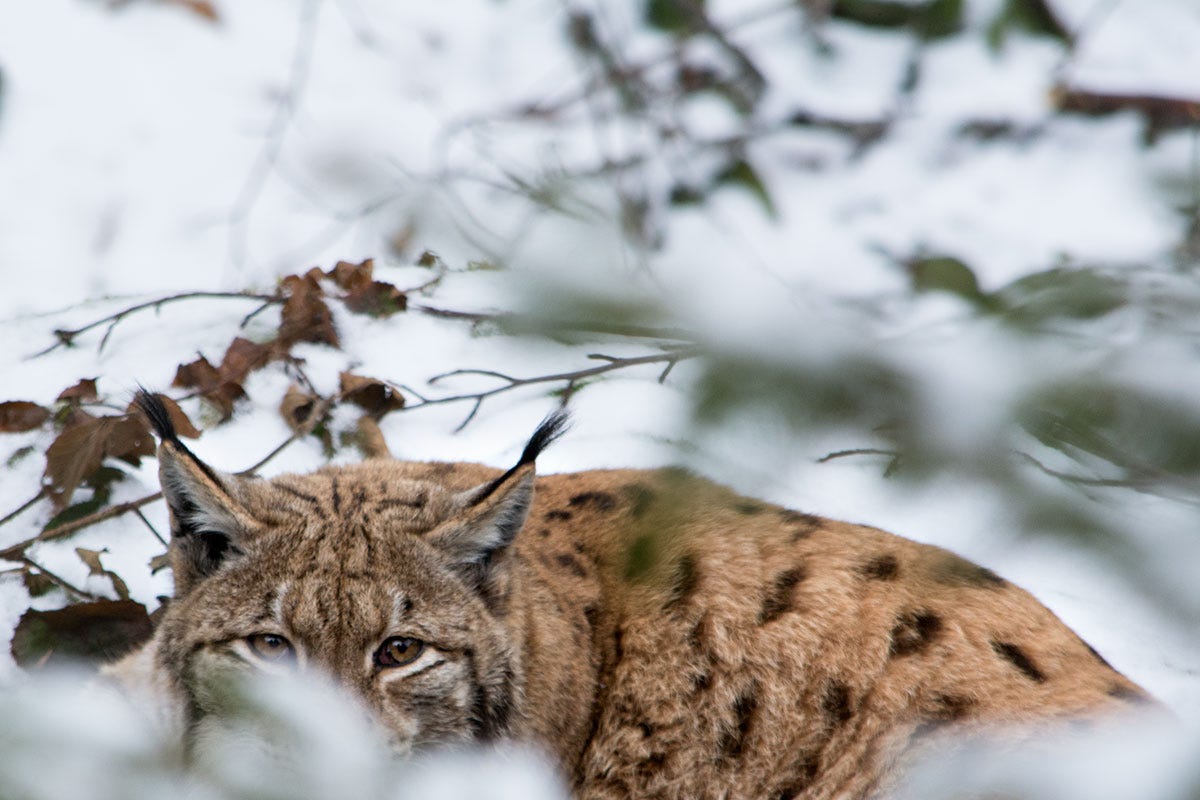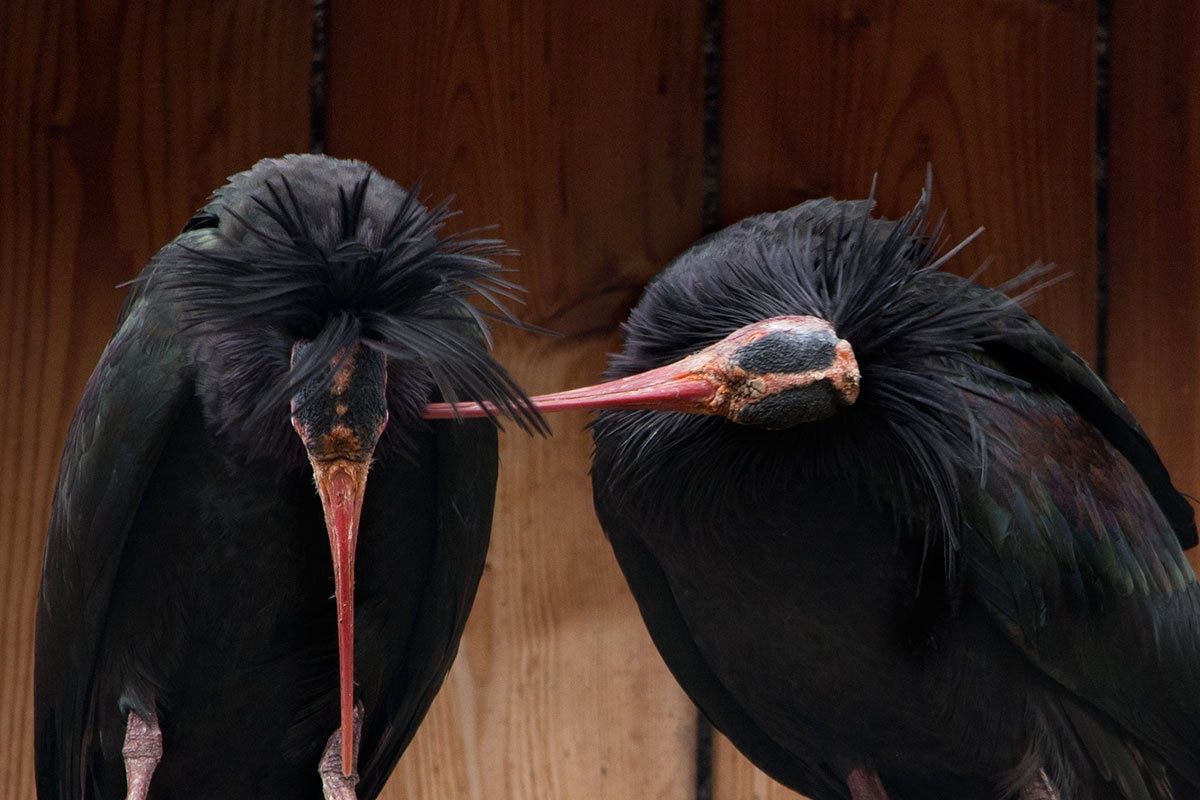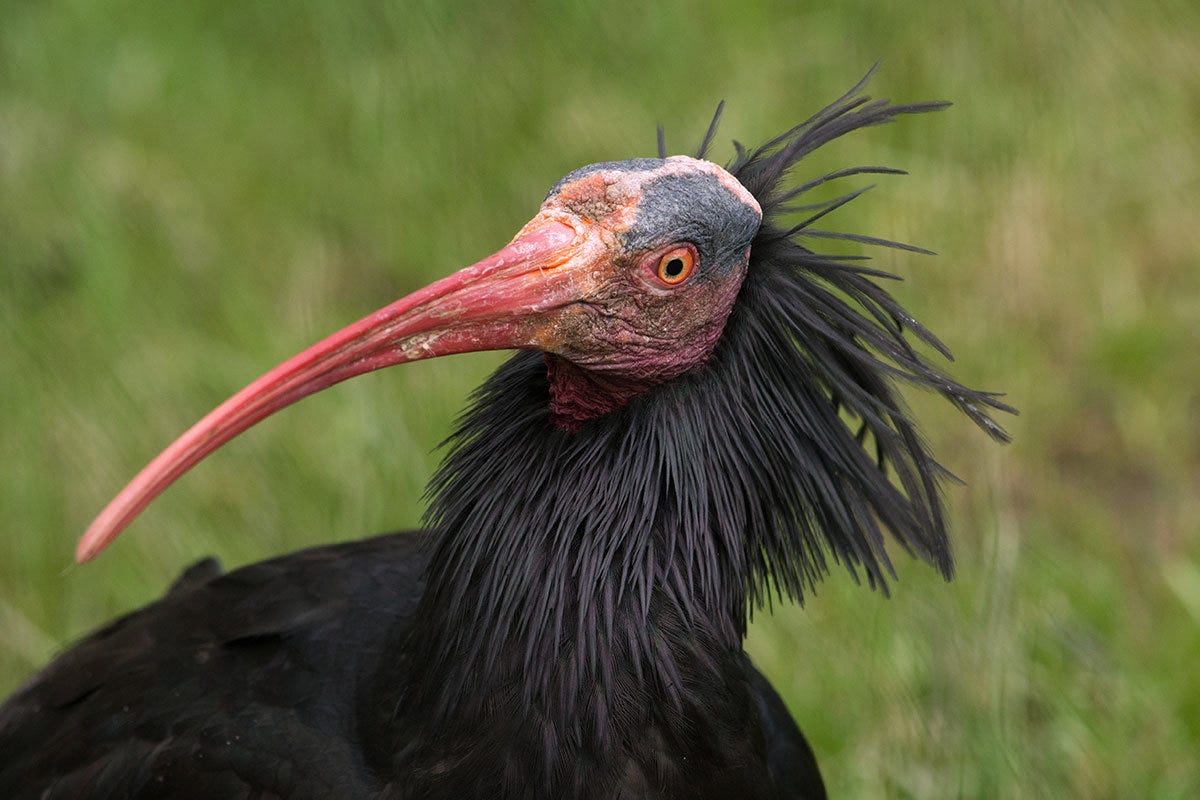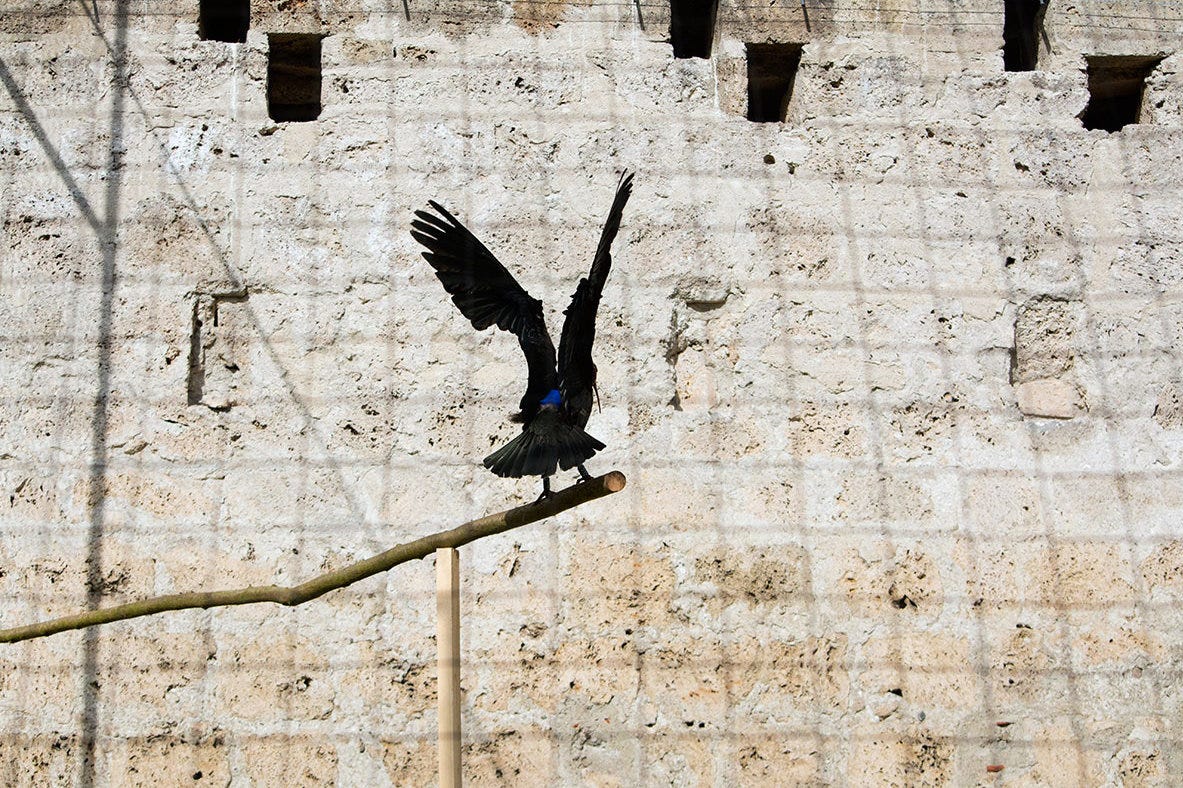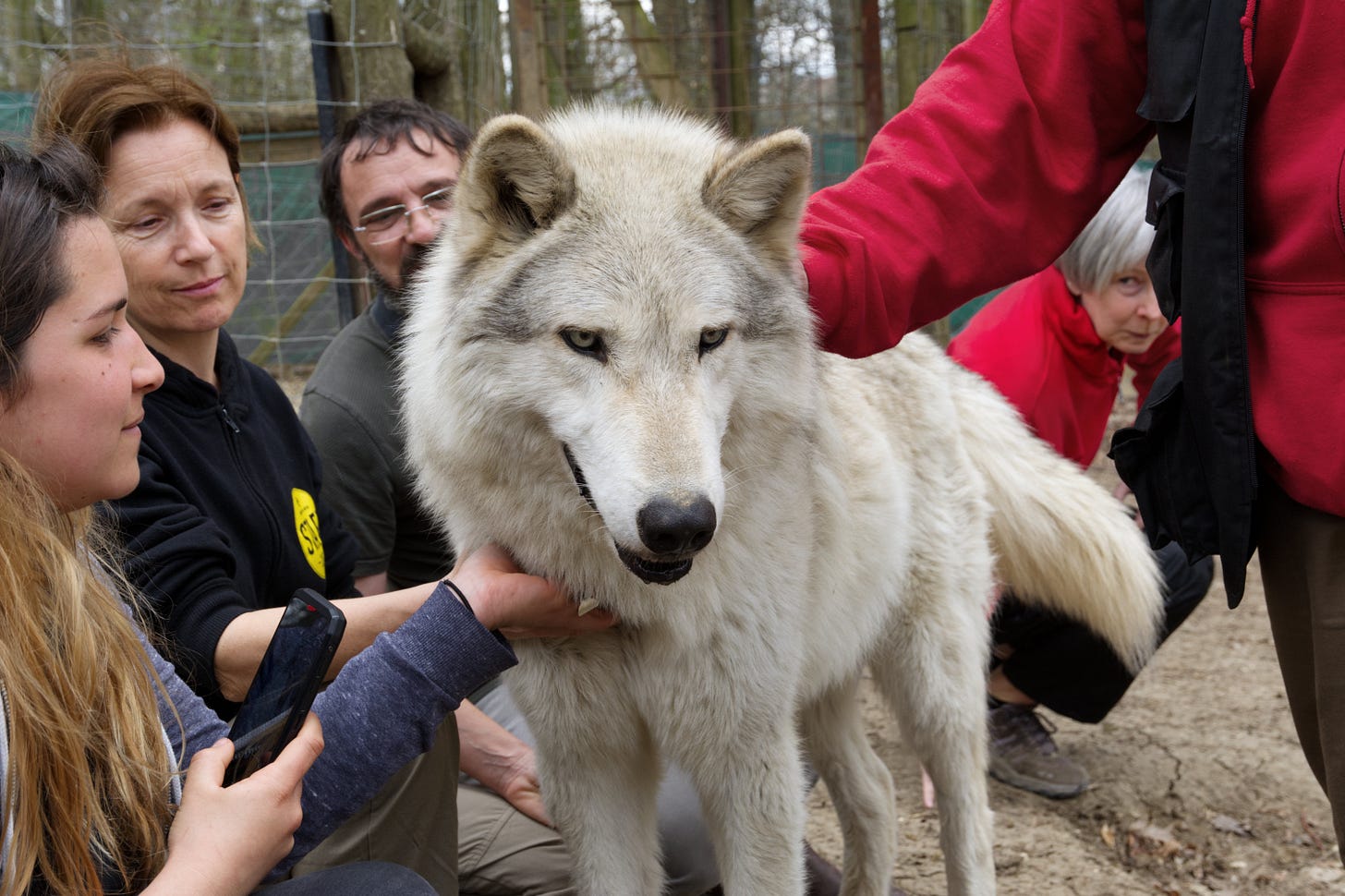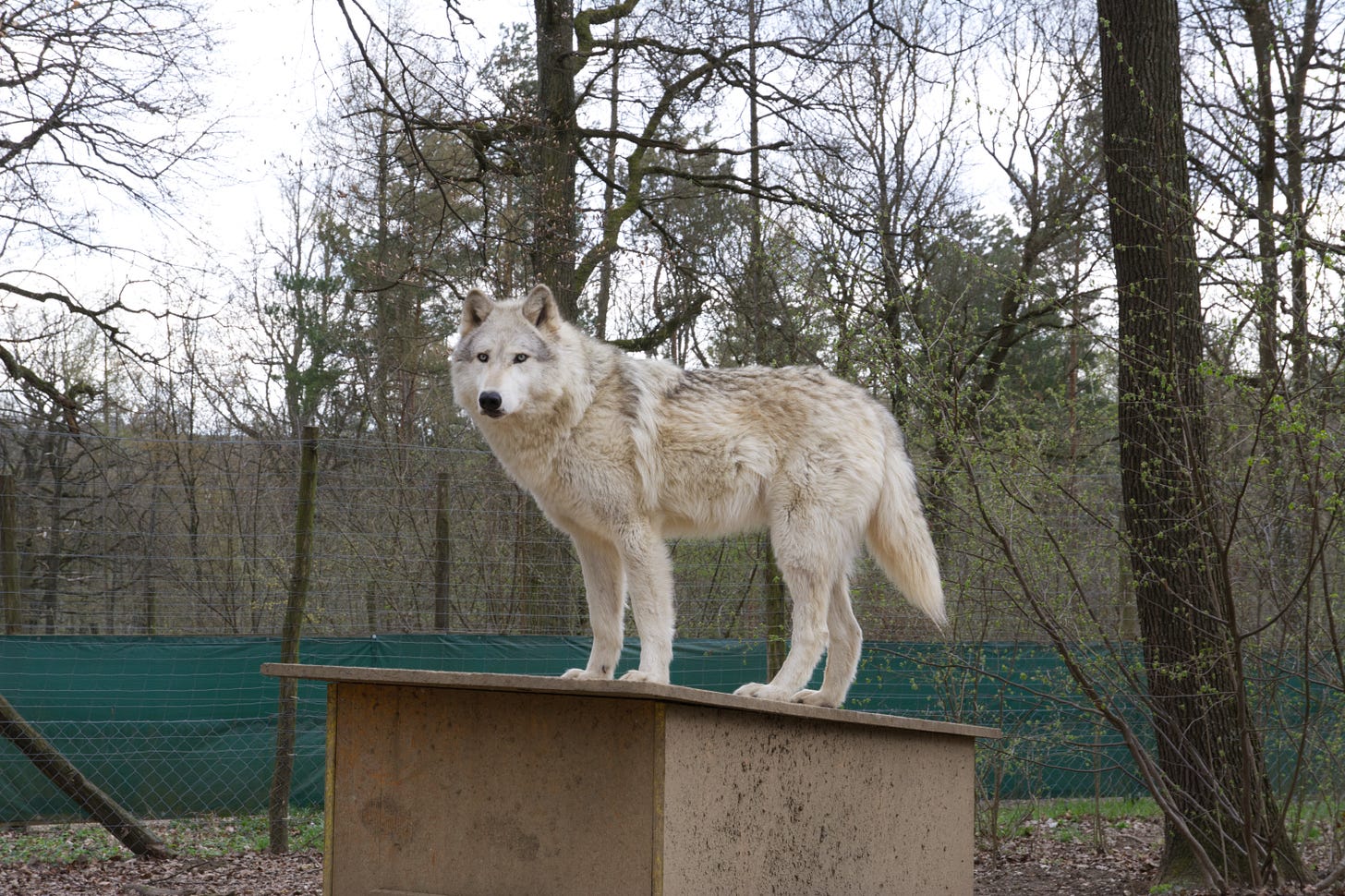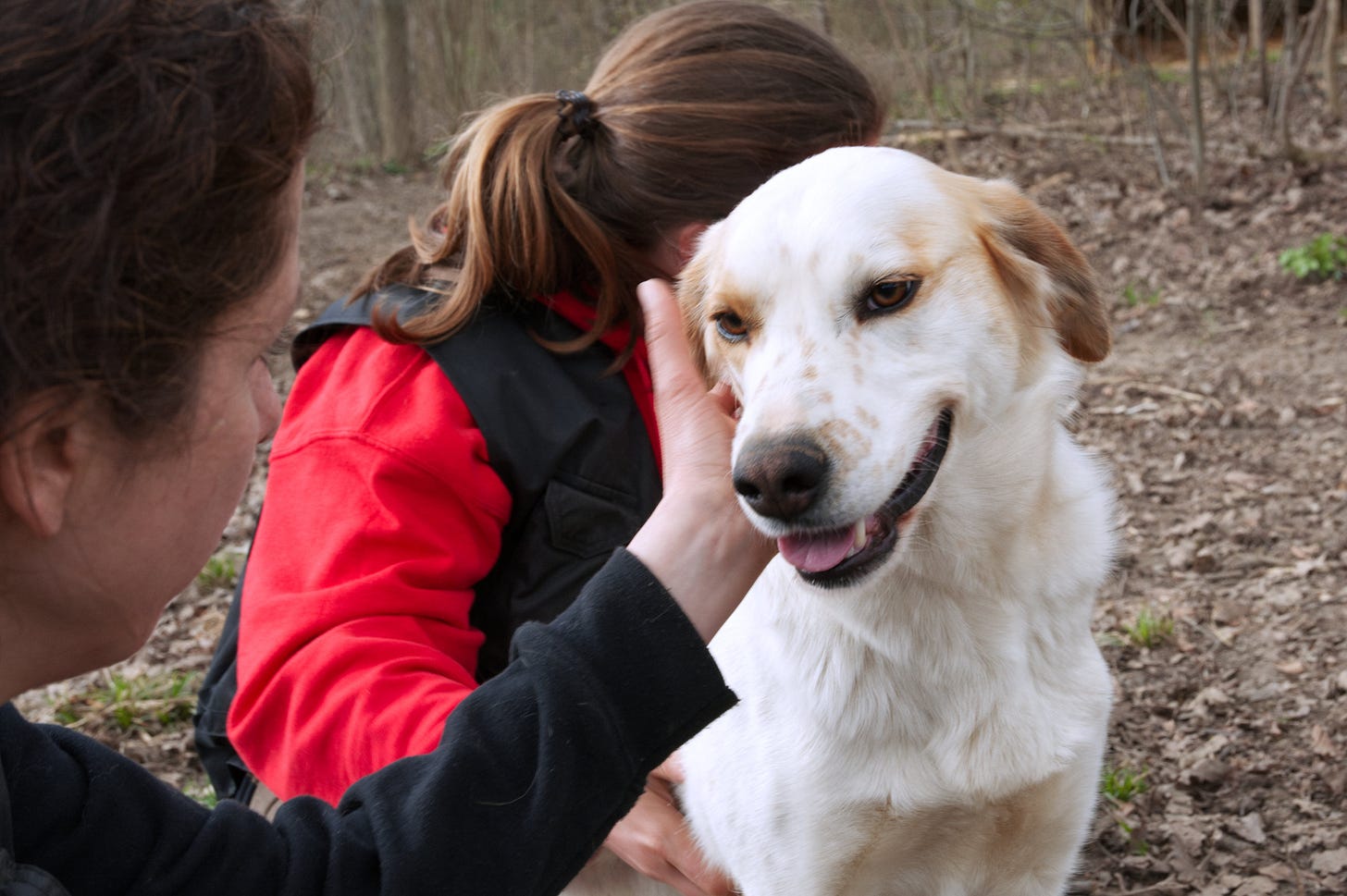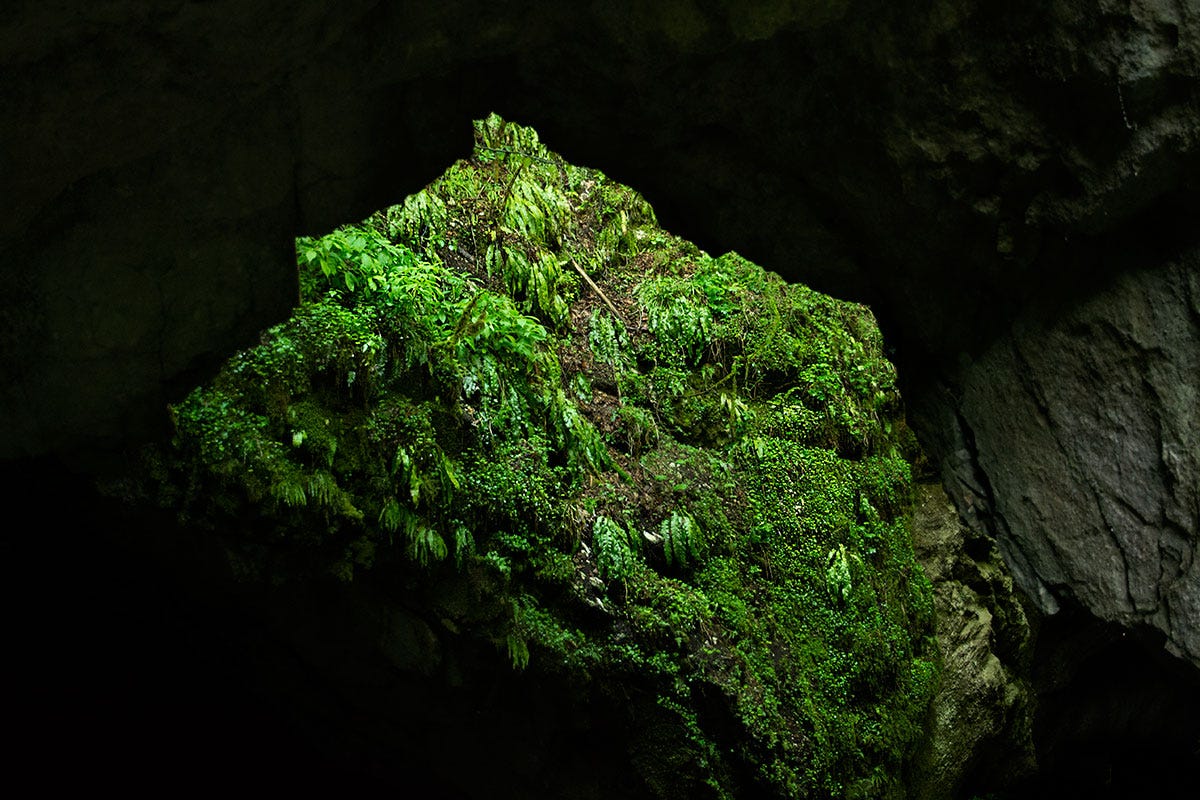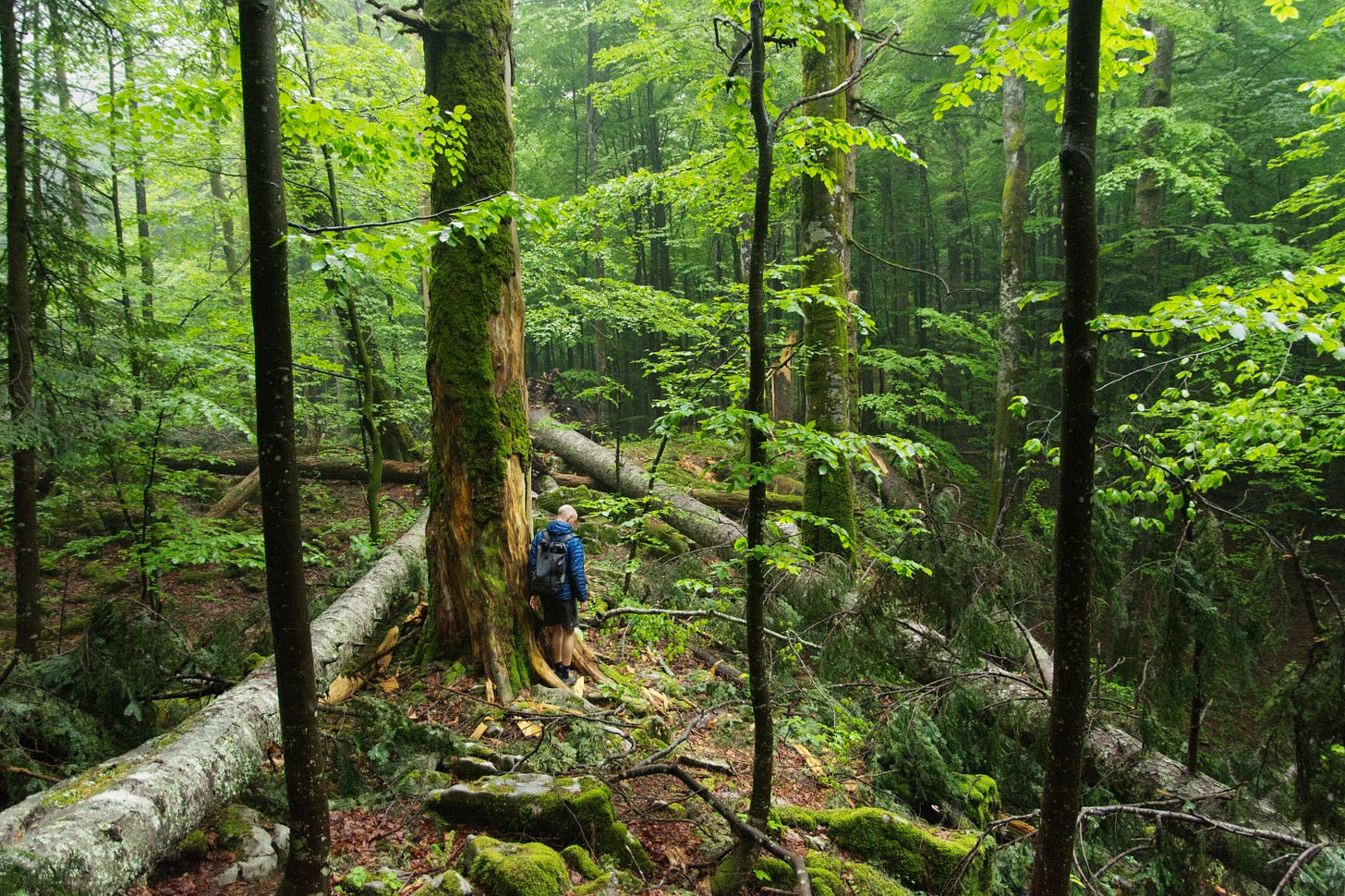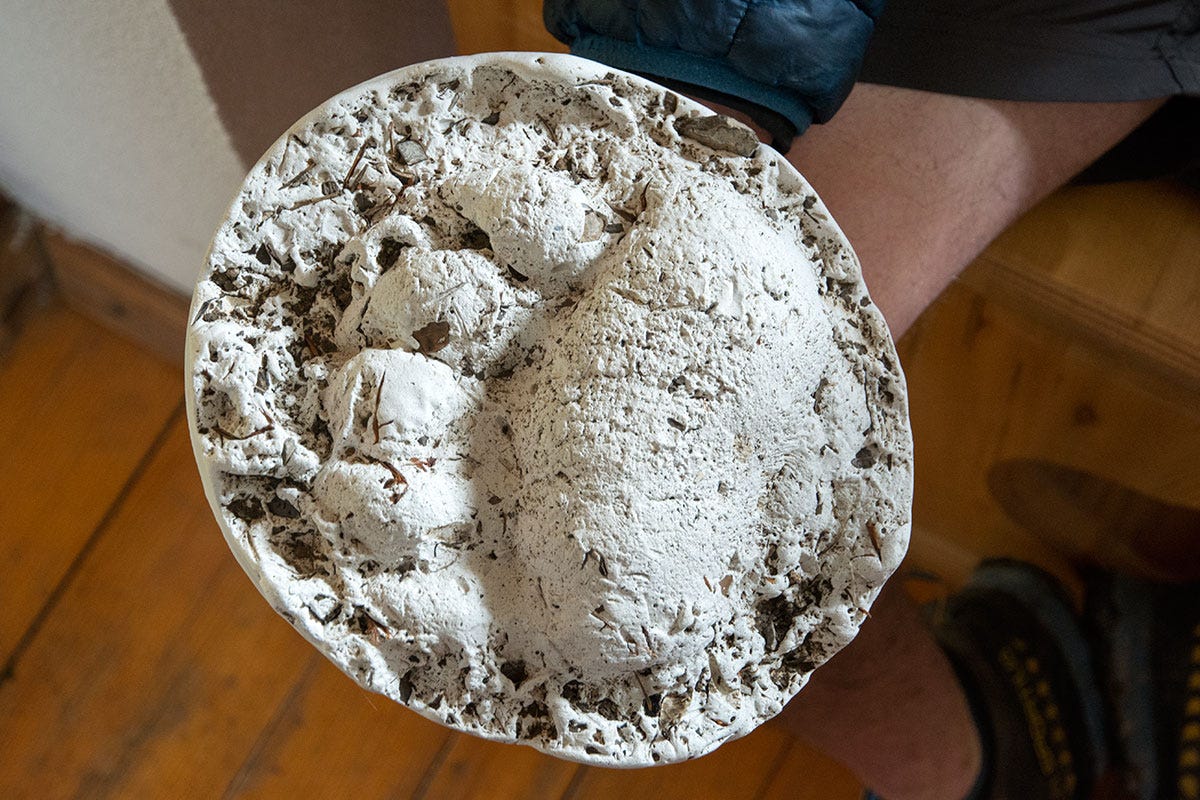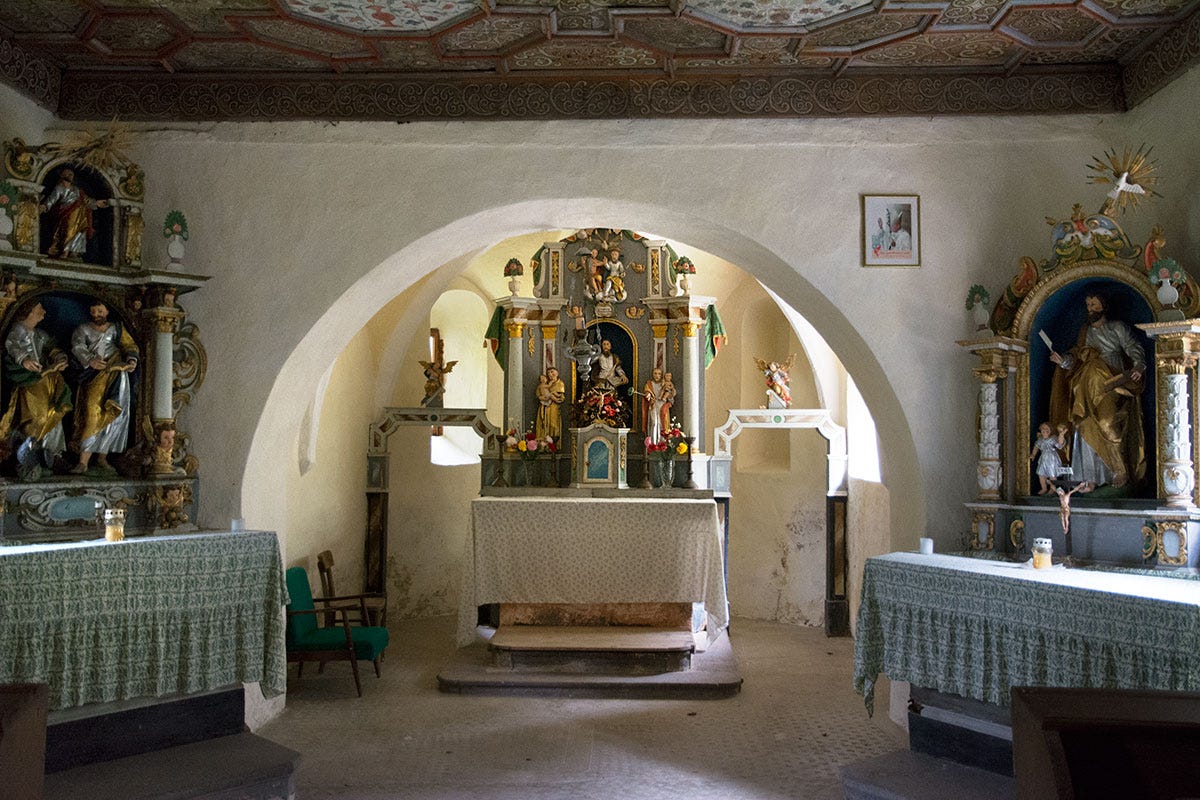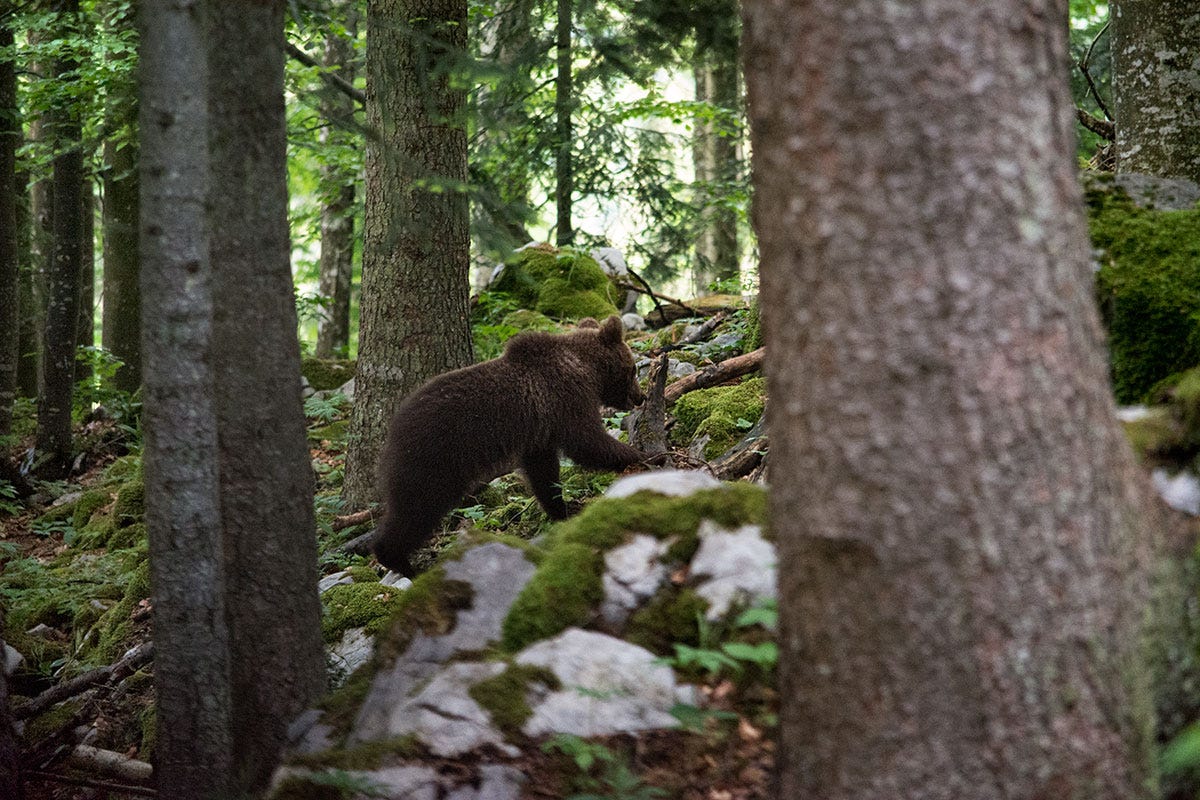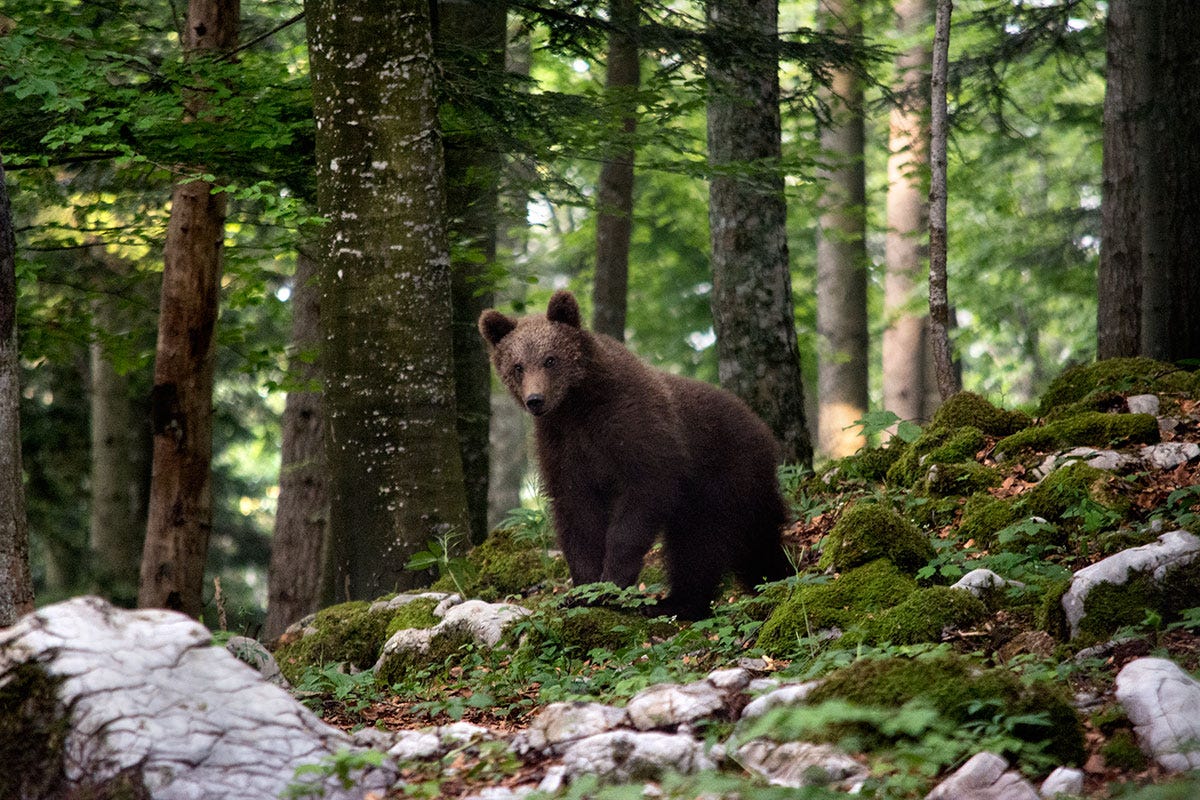THE HUMAN CYCLES
A Journey to the Wild Heart of Europe
In the winter of 2017, we decided to cycle from England to Slovenia. Along the way we camped out in rewilding projects and reclaimed wildernesses, all the while keeping our eyes, hearts and minds open to nature.
Our intention was to cast off both the boredom we felt for our jobs and the hopelessness and despair we felt for the climate crisis. We chose Slovenia after reading an essay by George Monbiot called Accidental Rewilding. It talks of nature’s capacity to recolonise the spaces left by war, genocide and other deadly humanitarian disasters. We felt inspired by the idea that wild nature could cover the void left by the deadliest episodes of human history and trigger intergenerational healing. In one passage, Monbiot describes abundant forests appearing on the site of mass persecution against ethnic Germans in Slovenia during the 1930s:
So tall and impressive are the trees now and so thickly do they now cover the hills that when you see the old photos — taken, in ecological terms, such a short time ago — it is almost impossible to believe that you are looking at the same place. I have become so used to seeing the progress of destruction that scanning those images felt like watching a film played backwards. (Monbiot, 2013)
Nature’s abundance and opportunism provided the perfect example for us to follow. Could prolonged immersion heal our own severed connections with the natural world and set us on a new course in life?
December 2017:
We quit our jobs and began pedalling east on Boxing Day. By the time we got to Germany the ‘Beast From the East,’ a Siberian cold snap caused by the melting of Arctic sea ice, rolled in. It had us dragging our bikes through waist-height snow, thawing drinking water over open fires and seeking shelter in hunters’ hides, golf courses, foresters’ cabins and the houses of pitying strangers.
We were determined though, and had no plan beyond reaching Slovenia via as many pockets of rewilded land as possible. Along the way we met gamekeepers, rewilding experts, scientists and foresters, and got up close to wild herds of konik horses and European bison, families of beavers and even a pair of young brown bears. When we finally made it to Slovenia, we spent a glorious spring exploring the Julian Alps on our ruined bikes, before our money ran out and we flew by to teach in China.
It was a fascinating glimpse of the rewilding already taking root in mainland Europe. Below are some photos and written dispatches from that trip.
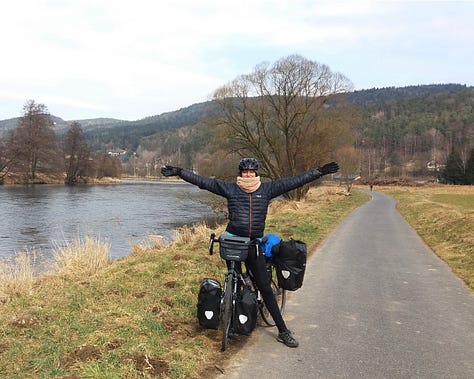
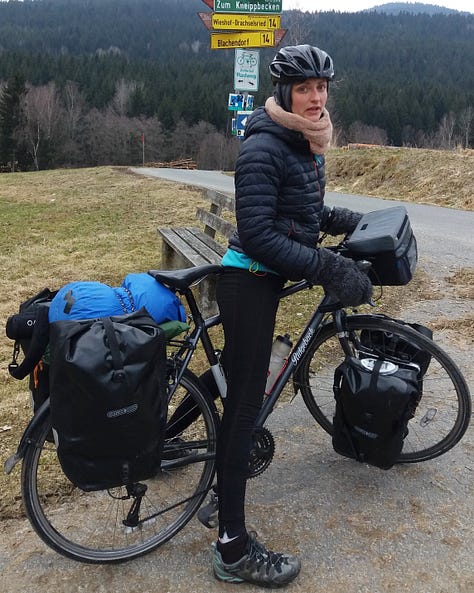
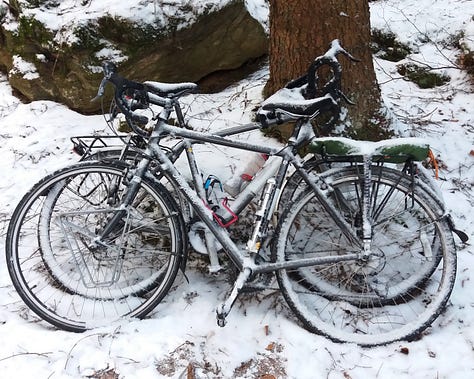
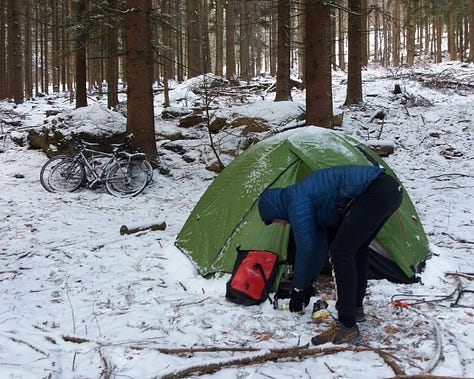
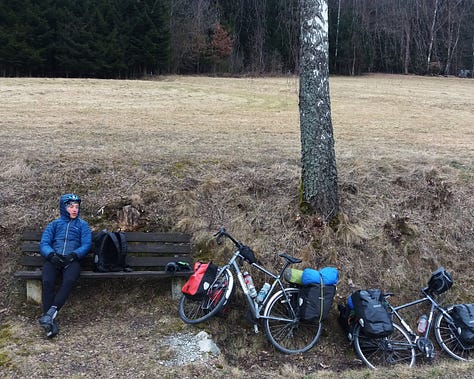
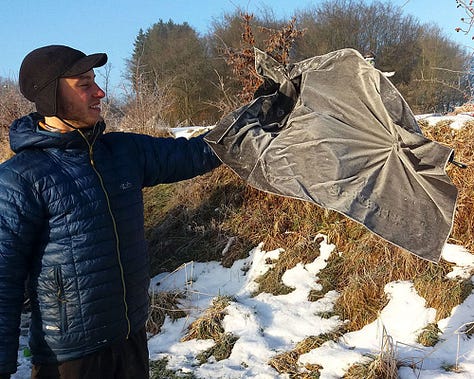
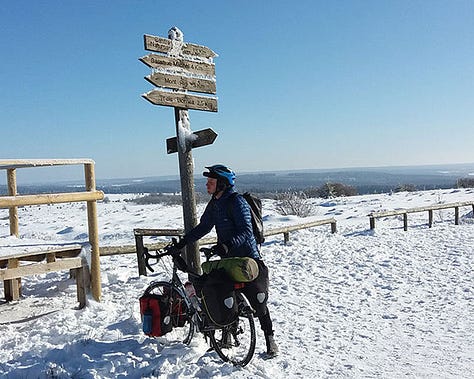
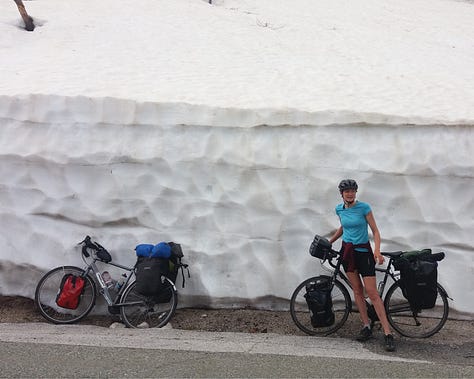
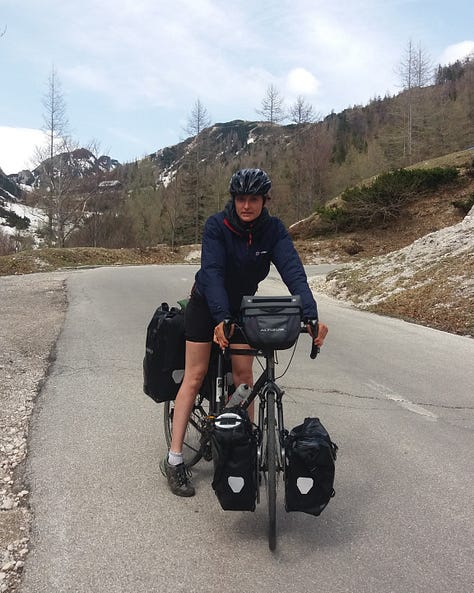
ENGLAND
Where Foxes Fight and Drunks Wander
We Received Some Unexpected Visitors While Camping on a Bedfordshire Gold Course
“Joe, wake up!”
My eyes snapped open to the sight of Tamzin shaking me. The light of the moon was shining through the frost-covered sides of the tent, bright enough to illuminate the whites of her eyes.
“Someone’s coming!” she hissed.
It was our second night of winter wild camping, and our tent was hidden in a thicket of thorn bushes on the edge of a golf course in Bedfordshire. We were cycling from my family home in Oxford to the ferry crossing in Harwich, where we would take the overnight ferry to the Hook of Holland.
“Oh, not now,“ I groaned, and pulled the drawstring face-hole of my sleeping bag open, propping myself up on an elbow. The cold air on my face grew fingers, starting at my neck and working their way downwards.
Sure enough: footsteps, heavy and irregular, were stomping through the leaves and mud, and getting closer.
We had considered the 140 mile jaunt from the centre to the east of southern England as a decent opportunity to test out our gear, and to slowly break ourselves-in to winter cycle touring. However, over the last 36 hours it felt like we’d been battered by every one of its associated challenges.
First, there was ice.
Then, there was rain.
And always, there was darkness.
The latter, closing in fast at 3:45, was what sent us scrambling like fugitives into a Bedfordshire golf course, ducking for cover from the lights of the security buggy doing the final rounds.
It had been a day of cursing the weather and fretting about the waning light. And now, lying in our tent worrying about whose footsteps were approaching, I felt completely dislocated and at-odds with the nature we were supposed to be exploring.
The footsteps stopped and two men started speaking. While we had no idea what they were saying, we could hear from the gargled harshness of their voices that they were drunk. While it was good news that they weren’t about to evict us from the course, you never know how two drunk men are going to react on stumbling across a tent in a place it obviously shouldn’t be.
After a minute or so the men walked away, their footsteps echoing down a nearby verge and onto the green. Breathing a sigh of relief, we lay our heads back on the mats, only to sit bolt upright again to a short, but deafening, scream.
‘What was that?’ We both blurted, before the scream was answered by another, equally intense scream coming from the other side of the tent. There was a scuffle, snarling, and the sound of small paws sprinting off into the night.
“Foxes!” We groaned simultaneously, and fell fast asleep.
Fully packed up the following morning, our waterproofs, bikes and panniers plastered with mud, we retraced our steps back down the private unmetalled track towards the road heading east.
I must admit I felt satisfaction at having trespassed on the sacred lawn of the golfing classes, having always held a certain contempt for their elitist game with its devastating environmental impacts. To quote Jay Griffiths in her book Wild, golf is ‘an arch act of enclosure, a commons fenced and subdued for the wealthy.’
But I felt uplifted for another reason. We had just illicitly witnessed an otherwise bland, manufactured landscape as seen by night. A wilder, less predictable place, where foxes fight and drunks wander.
Two men pulled up to us on a quad bike as we neared the road, scrutinising our appearance with no friendliness in their eyes.
‘You lost?’ One of them asked, and I chirpily fired off a cryptic, pre-rehearsed answer.
‘Oh don’t worry, we’re just passing through!’
The men narrowed their eyes.
‘Well I wouldn’t go that way,’ one of them said, pointing back the way we’d just come. ‘It’s a golf course, and it’s private!’
THE NETHERLANDS
72 Hours in the Horsterwold
Wild Camping and Wild Horses in a Manmade Forest
Horsterwold, Flevoland Province
A small herd of red deer bounded across the cycle path and into the forest as we double-checked our GPS. A single fawn hesitated by the edge of the track wide-eyed, as if the concrete incursion into its habitat were a river and we were crocodiles.
Turn left, said Google Maps.
Up until this point, the uniformly-pristine, metre-wide cycle track which had led us the 20-odd miles from Amsterdam had continued uninterupted, even as we’d turned off the main road and into the Horsterwold, the biggest deciduous forest in western Europe.
Now, with the lights of the roads replaced by the oranges and pinks of sunset, the designated route was little more than a ditch, with a yard or so of mud beside it serving as a path. Obediently we dismounted, and began the final 900m shove to the paalkamperen site on foot.
‘Wild camping,’ as it’s known in the UK, is illegal in the Netherlands, as population density is high and most land privately owned. Paalkamperen, or ‘pole camping,’ is an ingenious act of Dutch compromise, in which a specific, remote location of a nature reserve is marked with a pole for anyone to camp for free.
While the GPS coordinates are made public, pole camping sites are typically remote and only accessible by foot or bicycle, meaning the chances of being disturbed are small. The deal is that you generally leave no trace, don’t camp far from the pole and don’t stick around longer than 72 hours.
As the sun dipped, so did the temperature, and I could already see frost forming on Tamzin’s panniers as we struggled through the mud. However, I felt confident that in a few minutes we’d be sitting beside a roaring (self-contained) fire, cosying-down and feasting the night away.
As we progressed though, the ground got squishier, and the branches hugging the ditch from the right got thicker, lower, more numerous. After ten minutes we were stuck, and by the beams of our bike lights, could only see a mass of thorned twigs in every direction.
Pulling a semi-submerged spd cycling shoe from the mud with an obscene squelch, I zoomed in on Maps for a more detailed view of the area. The greens, blues and browns on the screen turned loading-beige for a few seconds, before a notice appeared:
Battery empty. Your phone will shut down in 30 seconds.
Looking up from the reassuring smartphone hue, we realised that it was now really, really dark.
‘Perhaps this wasn’t the turning,’ I mused cheerfully, trying to ignore the moment’s horror movie overtones.
Thus commenced the next hour, spent slipping around in the mud, going around in circles and getting spooked by inanimate objects. Our situation wasn’t helped by our cheap headtorches which, by tunneling vision onto a patch of light a few feet ahead, left the reptilian brain to fill in the peripheral blanks.
At one point, Tamzin screamed at a silage bale (it looked like a stag) and in another, I got the willies when we considered leaving our bikes and gear behind to quicken the search (what if they weren’t there when we got back?).
It felt like midnight when we finally found the pole site, a roughly-hacked, well-trampled forest clearing, equipped with a simple wooden shelter and fire pit. Really it was just approaching seven. After pitching up and eating, we fell asleep immediately.
Hailstones pounded us into consciousness the following morning, and we ventured into the reserve. By day, the forest seemed less like a wild place and more like a man-made plantation, full of straight ditches, flattened clearings and equidistant rows of trees, making it oddly reminiscent of the tree-lined avenues of the towns and villages we’d been passsing through over the past weeks.
The Horsterwold, like most things in Flevoland province, is in fact completely engineered, built and managed by humans. Were it not for a dam network constructed in the 1930s and a massive drainage project in the 50s, the entire province would still be under the North Sea, as it had been for the last several millenia.
However, the atmosphere created by this, in which humans seemed absent yet omnipresent, actually added to the eerieness of the place. The young trees, unlike those growing in staggered bursts through the tangle and jostle for light of a conventional forest, had shot up prematurely, their spindly trunks swaying madly at the slightest breeze. The whole forest seemed to be moving and groaning, and large swathes had simply fallen over.
Yet the fertile clay soil, bearing its marine past through the shards and twists of sea shells embedded in it, was exploding with life, from the huge splats of translucent slime moulds clinging to it like beached jellyfish, to the bright green moss covering every fallen log. Storks, heron, greylag geese and cormorants patrolled the dykes and ponds, while finch, golden plover and bearded tits darted about, wary of the birds of prey circling high above.
When our time at the pole camping site was almost up, Tamzin suggesed we do one last hour of exploration on foot before leaving. We’d had every sort of weather over the last 72 hours, and she saw the current burst of sunshine as a photographic opportunity not to be missed.
We were walking beside a lake, which on previous days we’d seen only as a hangout for ducks and swans, when a thunderous bout of whinnying told us we’d stumbled across a herd of about 40 wild konik horses. With thumping hearts, we scurried into some nearby bushes, where we remained for the next several hours.
The semi-feral konik horse, largely considered to be the closest living relative to the extinct wild Tarpan horse, is an iconic poster-animal for efforts to rewild parts of Europe. Squat, shaggy and of a blue dun with a dorsal stripe, they looked more like a prehistoric cave painting than the domestic horses I’ve seen in the UK.
Watching this powerful herd drinking and grazing, while the mares mothered their foals and stallions fought for dominance in the middle, one thing became abundantly clear:
We were only visitors, and our 72 hours had just run out.
Interview: The New Wilderness:
Oostvaardersplassen is The Netherlands’ Most Impressive Rewilding Project
Oostvaardersplassen, Flevoland Province, The Netherlands
”Animals are basically like people,“ said Mikal Folksterma, her earth-stained hands resting on the heavy timber coffee table between us. “Greylag geese have ‘kindergartens,’ where a few mothers care for a thousand babies while the rest fly away to graze. Heck cattle can walk anywhere, but choose their ‘neighbourhood,’ staying there and only venturing out occasionally, like a holiday…”
50 years ago, nobody would have thought greylag geese or Heck cattle would be a common sight in this corner of the Netherlands. 50 years ago, no one would have thought that I’d be sitting here at all, let alone inside a solar-powered cafe, near a taxidermed white-tailed sea eagle, opposite forester and self-proclaimed ‘humanitarian with a green heart’ Mikal Folkertsma.In 1968, this very patch of land was still in the process of being ‘reclaimed’ from the North Sea. Freshly-drained and cordoned-off with dikes to join the wider artificial landscape of Flevoland, the newly-acquired polder was intended only for industrial development.
”Business stalled after the 1970s oil recession,” explained Mikal, eyes wide with enthusiasm as she recounted the genesis story I’m now very familiar with, “And the greylags colonised the new land as a breeding and moulting ground. They’d been absent from the Netherlands since 1935, and their grazing made the land suitable for a wide range of rare migratory birds to make a home here. Nature happening spontaneously like this was unheard of in the Netherlands, and so a campaign for environmental protection was launched. This is how Oostvaardersplassen was born.“
Oostvaardersplassen (OVP) is a 22-square-mile wetland, home to a stunningly diverse and abundant array of birdlife, huge herds of semi-feral herbivores, and — I’d just discovered — delicious coffee and apple pie. It is the nation’s most impressive example of rewilding, and the beating heart of a growing network of interconnected nature reserves dubbed by award-winning documentary director Mark Verkerk as De Nieuwe Wildernis.
”Frans Vera pioneered the bringing in of large herbivores, to diversify the grazing and stabilise the conditions brought about by the geese,” Mikal continued, referring to the dutch ecologist for whom the reserve could be regarded as a living phd thesis. ”The idea was to take a step back and allow nature to take control.”
The orthodox view of conservationists at the time was that before widespread human settlement at the end of the Pleistocene, Europe had existed in a ‘climax equilibrium’ of closed-canopy forest. Vera’s work challenged this view, instead putting forward a ‘non-linear model of shifting forest pasture landscapes, kept partially open by the grazing of large herbivores.’ (Lorimer and Driessen 2013).
The large herbivores chosen to graze the area were Heck cattle, a bred-back imitation of the extinct European aurochs, created by the Heck brothers, pioneering zoologists of Nazi-era Germany; Konik horses, a sturdy Polish breed who are believed by many to be our closest living link to the prehistoric wild tarpan; and red deer.
“So, who are the real architects of Oostvaardersplassen?” I asked, intrigued by the give-and-take at work between man and nature that characterized the area.
“In one sense, definitely humans!” Mikal laughed. “This area is manmade, just like the rest of Flevoland, and most of the Netherlands. But the purpose of Oostvaardersplassen is to create a space in which we can begin to stand back, and allow nature to lead the way,”
In Oostvaardersplassen: New Nature Below Sea Level, the book Mikal handed me on arrival, Vincent Wigbels points out that the actual Dutch wilderness is long gone, existing ‘thousands of years back in time… when human habitation was literally a marginal phenomenon.’ He describes Dutch nature reserves as ‘like natural islands in an artificial sea,’ which themselves are heavily ‘influened by people.’
While he and Mikal both seem encouraged by nature’s resilience and self-willed regeneration, Mikal is clear that human management of the reserve won’t end any time soon. Without the predation of large carnivores to regulate the numbers of herbivores in the reserve, Staatsbosbeheer, the State Forestry Management Service, are forced to perform a culling each winter. As well as preventing food scarcity during the less abundant months, the culling also weeds-out the already sick and dying animals, preventing disease in the same way a predator would.
The culling has caused some to doubt OVP’s legitimacy as an example of rewilding. Nature contributor Gaia Vince, for example, feels that it ‘(makes) a mockery of seeing how a ‘natural’ ecosystem functions’ (Vince, 2017). Curious if a stepping-down of this aspect of human involvement were possible, I asked if large carnivores would ever be introduced to the reserve.
“If wolves manage to break into the reserve and settle here on their own accord, then they’re welcome,” she replied quickly, guessing just which large carnivore I was thinking about, “But we’re not going to release them into the reserve artificially.”
For rewilding enthusiasts across Europe, wolves are like the holy grail of reintroductions. Driven to extinction in the Netherlands in the 19th Century, the discovery of a wolf carcass in Flevoland five years ago sent shockwaves across the continent, causing many to celebrate the carnivore’s homecoming. While the fanfare was premature (it was a Polish wolf, most likely dumped there as a prank by agricultural workers), wolves have since been sighted making furtive excursions across the German border into the Netherlands and Belgium.
“A lot of people are desperate to see the return of the wolf,” Mikal eleborated, “But it wouldn’t be fair, or pretty, to release them into this fenced-off area. Wolves aren’t nice: when they find a weak animal that can’t move they don’t kill it first, they just start eating. We want animals to live as natural a life as possible, but we still want to prevent unnecessary suffering. So for now, we humans are the large carnivores. We allow nature to decide who has to go, but we send a hunter in to end it quickly. To prevent suffering.”
While I could see that an emaciated calf being eaten alive by wolves probably wouldn’t make the best PR material, it struck me as a strange role for humanity in an ecosystem: finding suffering and ‘preventing’ it with a gun, like a long-range euthanasia clinic. When Mikal informed me that the health-determining methods used to determine which animal’s ‘time’ has come are borrowed from the meat industry, their image in my mind began to shift further towards something domestic.
However, on fenced, manmade land, humans undoubtedly have a responsibility towards the animals we’ve put there.
As Thom van Dooren argues in his exploration of bird breeding programs Flights Ways:
‘While a species and its individual participants cannot be disarticulated in any straightforward way — the “survival” of either requires the continuity of the other — each can still be cared for in ways that give more or less regard to the well-being of the other…’
In other words, the well-being of individual animals should not be sacrificed for the ‘greater good’ of the species (or in the case of OVP, the reserve ecosystem). The two are intertwined, like a culture and the people that comprise it. Culling the animals humanely, for now, seemed the only rational way to control the animal numbers.
Saying my farewells to Mikal, I was still struggling with the ethical and practical complexity involved in trying to promote a wilder world on a planet built by humans.
Building for Nature
Exploring the Unlikely Alliance Between Nature and Clay Mining in Nijmegen
Waal River, Nijmegen, The Netherlands and Gelderse Poort, Belgium
”The mines built this city,” said Twan definitively, gesturing out of the window to the elegant, red brick office block opposite the one we were sitting in. “None of these buildings would be here if it weren’t for them! So, when they came under pressure from environmental groups in the 1980s, it seemed like an impossible situation. The demand for bricks didn’t go down, but suddenly there was a value attached to the riverine landscape they were impacting. The mines came under attack.”
Twan Teunissen is a geographer and wildlife photographer based at the Ark Nature headquarters in Nijmegen. Born and raised in a nearby village, in conversation he’s as passionate about the economy and culture of the Netherlands’ oldest city as he is about the nature flourishing on the banks of its winding river Waal.
“Room for the River started spontaneously,” he continued, referring to the rewilding and flood-defense project which aims to transform the area into ‘the green lung of an expanding urbanized and economically important region’ (WWF). “Something amazing happened. Nature began colonising the clay pits. Where the top layer of clay had been scraped away, bushes and shrubs were popping up, providing the ideal habitat for nesting birds. It turned out that clay mining was actually beneficial to biodiversity, which was a win-win for both nature and industry. We then set out to keep these processes in motion, through methods which we would nowadays describe as rewilding.”
These methods involved the dismantling of dikes to allow for natural river dynamics, the reintroduction of the locally extinct Eurasian beaver, and the natural grazing of konik horses and Galloway cattle. As well as stunning results for wildlife, the project led to a massive PR turnaround for the clay mines, with environmental groups even adopting the slogan ‘building with bricks is building for nature.’ Other industries weren’t so lucky, with sand mining being banned in the area and 1500 hectares of farmland being bought off by the government to make way for the semi-feral herbivores.
“While the project was controversial among the agricultural community,” Twan continued, ”The myriad benefits are now clear to see. A huge field with sheep or cows in it really doesn’t provide many jobs. But the spectacular array of wildlife we have now is bringing tourists, which has opened up new opportunities for local businesses.”
It was hard to argue with this. Over the previous days exploring the area by bike, we had seen marsh harriers stalking prey like jet fighters, hovering on air currents kicked up from the riverbank, as well as shaggy Eurasian beavers sleeping on their expertly constructed ‘day rests.’ We had also seen newly opened hotels, restaurants and quaint riverside cafes, awaiting the wildlife tourist season to come. As well as nourishing both the economy and wildlife, Room for the River serves another vital function. Its poetic name comes from its other role as a flood plain, providing ‘room’ for the Waal to burst its banks safely. On a warming planet with rising sea levels, the river is required to transport more water than ever before. This was evident in the 1995 and 1998 floods in which 250,000 people were evacuated and the water almost — but not quite — overwhelmed the network of dikes which have protected the Dutch heartland from flooding since the Middle Ages. It was a rude wake up call for a nation in which 15 million people live below sea level.
“ famous for our canals and concrete flood defences,” said Twan with a smile. “We’ve exported this technology all over the world. But now, we have dignitaries from the Yangtze in China visiting us to learn about our green flood defences. What you see in Nijmegen is the future.”
The mercury was dipping to minus seven as the deep hoot of a male tawny owl echoed from the oak branches high above our tent. Exchanging a brief smile of anticipation, Tamzin and I stayed silent for several seconds, until the call was replied to by the high-pitched cahaw of a female.
We were in Belgium, having spent the day exploring the Border Meuse, a river protected and managed by Ark Nature’s Belgian partner Landschapp. The owls were yet another encounter with the wild, awe-inspiring nature we’d been witnessing over the previous week.
Returning my gaze to the small fire crackling inside our foldaway Bushbox stove, I pulled a piece of wood from the pile and paused to remove a clump of long, coarse fur clinging to it. Beaver’s fur. We had scavenged the wood that morning, shortly after stumbling into the industrious rodents’ riverside feeding ground. It was the first time I’d ever seen the work of beavers up close, and the carnage was astounding. Using their chisel-shaped teeth and characteristically bulbous facial muscles, they had lain waste to a small wood, with trees a metre wide felled like they were nothing, leaving branches, splinters and chippings all over the place. This messy eating, as well as their dam-building behaviours, is what makes beavers ecosystem architects. They slow the flow of rivers, provide habitat niches for smaller species and even trap carbon and nutrient runoff from intensively managed landscapes (Hood and Baley 2008).
Most importantly for us though, they had provided dry kindling, at a time when we’d run out of gas and everything on the ground had frozen solid. Throwing the piece on the fire and watching with atavistic fixation as the flames licked the base of the kettle, I reflected on our time in the Netherlands. It was a month of warm hospitality, thought-provoking conversations and a realisation of the true potential of wild nature, even in a land as small and intensively managed as the Netherlands. It was also a time of flat terrain, efficient cycle networks and relatively mild weather. With the Eifel mountains and Germany ahead of us, I thanked the beavers aloud for their gift.
I had a feeling we were going to need all the help we could get.
GERMANY
Too Kalt for Camping
The Locals Didn’t Approve of Our Decision to Camp During a Siberian Cold Snap
Near the Palatinate Forest, Germany
But it’s… really kalt,’ said the campsite owner in jeans and t-shirt, smiling with incredulity through the crack of his front door. I tried to smile back, but managed only to stare with longing at the flickering fireplace behind him.
‘Yes,’ Tamzin agreed sparkily, just about managing to hide the sound of her teeth chattering. ‘It is quite cold. So, can we camp here please?’
‘It’s very kalt,’ the man corrected her, fixing us with a blank and penetrating stare. His eyes seemed to be scrutinising us for any sign of shivering as he added: ‘Too kalt for camping.’
We were two nights in to our 130 mile southward journey from the Eifel mountains to Trippstadt, a town bordering the mighty Palatinate forest in western Germany, where we had arranged to meet an ecologist involved in the reintroduction of lynx. Although well-meaning, these circular conversations were beginning to seem like a common feature of the German winter-cycle-touring experience.
‘Yes,’ we both said, our patience wavering. ‘Can we pitch our tent please?’
‘As you like,’ the man said with a shrug. ‘If you really want to…’
The smell of paraffin invaded the tent as Tamzin chucked another firelighter into the foldaway stove and poured semi-frozen slush from a drinking bottle into the kettle. We’d run out of cooking gas ages ago, and our possessions harboured the sickly stench of the wide array of combustible fuels we’d been buying from the industrial estates of nondescript towns.
Over the previous days, we’d become acutely aware of a few inalienable truths about camping in the cold.
First of all, cheapish three-season sleeping bags do the job only until about minus five. Anything colder than that, and no ammount of sleeping bag liners or layers of clothing can keep out the chill.
Secondly, the above dilemna is easily (and cheaply) solved by shoving a second sleeping bag inside the existing one. Even a €20 jobbie, purchased in an insomnia-induced delerium at a Tresspass outlet in some off-season tourist town, makes the difference between a fitful night of icy horrors, and slumbering soundly in a world of toast.
And finally, everything freezes. Shoes go stiff, the ground turns impervious to tent pegs and a plastic jar of peanut butter becomes a deadly weapon. Laptops, cameras and tablets start protesting with thermometer-warning icons, and we’d begun resorting to stuffing our sleeping bags with bulky electronics before climbing in ourselves.
After packing up with heavy eyelids the following morning, we approached the owner to pay for the pitch.
‘You don’t have to pay me,’ he said. ‘I wish you good luck on your journey.’
Kindnesses had been few and far between over the previous few days, and we gushed our thanks.
‘It’s fine,’ he said, looking a bit uncomfortable. ‘We’re not even open. Nobody camps now, it’s way too kalt.’
Bombing down the hill, my still-sleepy eyes widened in awe at a snow-covered, spruce forest panorama illuminated in morning sunshine. They also widened in pain because the windchill was unbearable, and in fear as a muscled-up 4X4 roared past us, the gust almost sending us careering into the snow.
We were becoming quite familiar with terrifying traffic by now, and also with snow. As for the latter, we were starting to see why Inuit languages have so many words for the stuff
Lightly falling snow is pleasant and refreshing.
Powdery, settled snow is harmless, but exhausting to cycle through.
Snow pounded to brown slush by cars goes everywhere and wrecks your drivechain.
Heaps of roadside snow melt in the sun then freeze at night, causing dangerous black ice.
Settled snow on an unmetalled road, frozen over and then hollowed out underneath cracks under a tyre like a creme brulee.
The last one was our favourite.
After about 40 miles of slowly navigating through these various forms of snow it was getting dark, so we followed signs to a campsite, just five miles or so from Trippstadt. At the end of a winding, forest-flanked road, we came to a cluster of mobile homes with botched extentions, a restaurant from which no light emitted and a brick shower block. The whole settlement huddled next to a frozen lake with a diving platform protruding from the middle, but the sign above the kiosk read Open.
‘It’s kald,’ said the man, half-opening the sliding window into his tiny, cosy-looking office. Behind him, the orange glow of the plug-in halogen heater was hypnotising. ‘Too kalt for camping.’
‘Yes,’ we both said, over-familiar with the routine by now. ‘It is quite –‘
‘It’s very kalt!’ he repeated, a hint of alarm in his voice. I noticed then that he wasn’t smiling, unlike the last man. ‘We don’t accept tents at this time of year.’
‘Are you not open?’ said Tamzin with a nod to the neon. ‘We’d really like to stay here if possible.’ Behind her measured tone, I could hear just a touch of despair.
‘We are open for motorhomes and caravans,’ he said, ‘But not for tents. It’s too kalt.’ He seemed affronted by the thought of people camping at this time. I wondered if he was worried we’d die or be hospitalised or something.
‘We cycled here from England,’ said Tamzin, breathing deeply. ‘We know it’s cold.’
There was a silence, until at last he caved.
‘OK…’ he said, putting on a pair of glasses and pulling out a bundle of papers. ‘You can stay. But you must leave at eight in the morning as we’re closing the gates.’
Another fitful night’s sleep later, we set out at eight on the dot. This was no great challenge, as in late February it was light by seven. It only meant skipping our usual ritual of coffee and porridge, and saving breakfast for out on the road. However, shortly after setting off, we noticed an immediate difference in the temperature.
‘My hands are freezing!’ Tamzin screamed, but I was way ahead of her: a few nights prior I had burnt holes in the thumb, fore and middle fingers of my right ‘inner’ glove while cooking with fire. The wind was cutting in like needles, and I was engaged in the highly stupid act of cycling, on an icy, potholed road, with my hands in my pockets.
‘Aaaaaargghh!’ We both wailed.
After a mile or so the pain in my right hand got so bad I couldn’t bear it any longer. In a small village of timber-beamed cottages I dismounted in a plastic bus shelter, where the sun was magnified through the plastic onto the pavement, providing a sliver of warmth. I slumped against the tepid plastic of the shelter, gripping my right hand and moaning and yelping in a way I hadn’t since a small child. The light was metallic and blinding, and for a second it was all I could see. It was spinning chaotically, a screaming manifestation of the pain in my hand.
My eyes refocused on the sight of a smoking chimney, gently chugging before a backdrop of forested mountains. I felt dizzy, and wondered if I’d just fainted or had a panic attack or something. Looking down from the chimney I saw Tamzin, hands buried in her armpits, doing lunges in the middle of the road. Her lycra gave her the appearance of a deranged gym fanatic, and I burst into hysterical laughter.
After walking, wobbling, lunging and whinging the rest of the way to Trippstadt, we found a backerei selling hot lattes, schnitzel, berliners, pretzels and a whole range of other German debauchery.
‘Gutentag!’ Called the young woman behind the counter as we stumbled in, helmets on, faces blackened with smoke. She seemed the living antithesis of how we were feeling, radiating warmth, cheer and cleanliness.
At one end of the room was an ensemble of dapper gents, and in the other, a gathering of glamorous grannies, all noisily engaged in the latest gossip. In the bosom of this communal atmosphere, we struggled to maintain dignity as we ploughed through half a shelf of cream, jam and apple-injected pastry, sluicing it all down our necks with coffee and taking turns to thaw out our hands on the huge iron radiator.
Rejuvenated, we wheeled our bikes down a winding, slippery footpath the final half mile to the campsite, on the fringes of the Palatinate forest. A man spotted us from the window of the adjacent restaurant as we approached the gate and came outside. As he shook our hands, the wind blew, and tears came pouring from his eyes.
‘It’s too kalt for camping,’ he said gently. I could feel Tamzin go tense beside me as she heard the familiar words, and then relax again as he added: ‘Come inside.’
The man’s elderly mother sat smoking cigarettes at a restaurant table, with two geriatric dogs slumbering at her feet. Taking one long look at us, she turned to her son and began a rapid exchange in German, the details of which were lost on us. Eventually, she turned to us and said:
‘You’re planning on camping tonight?’
‘Yes,’ we said hesitantly.
‘It’s going to be minus twelve tonight. The winds from Siberia are coming.’
‘Hmmm,’
‘Tonight, you will sleep in the hexenhausen. The witches’ house.’
‘The witches’ house?’
‘Yes, for the same price as a tent. It has underfloor heating.’
‘That sounds nice…’
‘Yes. It’s too kalt for camping.’
Cabin Fever
Reflections From a Night in a Foresters Cabin
Rhön Mountains, Germany
As I cranked shut the door of the cast-iron stove, Tamzin lit another Catholic votive candle and placed it on the table with the other ten. With enough naked flame to burn this wooden structure to the ground in hours, what her irreligious shrine lacked in health and safety standards it more than made up for in warmth. I placed a pan on the stove and a full tupperware box from my backpack and poured in the contents — a homemade chili. As the warming smells of paprika, cumin and black pepper filled the room, I sat back in my wooden chair and did a quick reassessment of the events which had led us to a forester’s cabin in the snowy Rhön mountains.
After camping in Siberian conditions with inadequate gear for the past few nights we had decided, for the stretch between the German cities of Frankfurt and Coburg, to try out the hosting platform Warmshowers. For the previous three nights we had been fed, sheltered and ultimately looked-after in the homes of like-minded cyclists asking nothing in return: a heady and euphoric transition from the conditions of previous days.
While all the hosts we experienced then and since have been endlessly hospitable and generous, Marion, a mother of two and Brompton folding bike-enthusiast living in the tiny village of Sintal Oberzell, went one step further. A natural-born connector of people and projects, when we arrived at her place she had already got in touch with the team at local nature reserve Haus Der Schwarzen Berge — House of the Black Mountains — and told them about our project. By afternoon the next day we were being treated to coffee and cake by a group of intrigued ecologists, and by evening we were being driven up the icy slopes of the Rhön by Joachim, a forester with a face as kind and wise as a wolf’s.
Stirring the chili Marion packed for us, I felt contentment like no other. Having spent most of my life in towns and cities, I find something about a creaky old cabin, with an ample supply of wood and rations to see out the night, intrinsically exciting. In French travel writer Sylvain Tesson’s memoir Consolations of the Forest, inspired by the six months he spent as a hermit on the Russian taiga, he states:
‘The cabin will return to the soil when abandoned by its owner, yet with its simplicity it offers perfect protection against the seasonal cold without disfiguring the sheltering forest.’
In modern times though, these forests have been disfigured by forces beyond the four walls of the cabin. Agriculture and subsequent deforestation have caused the Rhön to become known by the name Land der Offenen Fernen, or ‘Land of Open Spaces.’However, while eating by candlelight within the newly-protected core of the forest, I felt license to refer to it as Buchonia, the name given to it by the Medieval monks of Fulda Abbey.
This name means: ‘Land of the Ancient Beech Trees.’
Quiet Biotope
Visiting the Place Where Humans Truly Become One With Nature
Eiffel Mountains, Germany
A gust of wind swept through the ancient beech forest, causing a sheet of snow to tumble gently to the ground. Its muted patter was followed by a faint jangling of metal, an unnatural but unobtrusive sound, coming from everywhere at once.I stood before one 180 year-old beech giant, its grey, smooth trunk rising high into the forest canopy where its branches reached out to share the light with its brethren. The source of the jangling sound was a metal plate, hanging from a small screw drilled into the bark. On the plate was a small crucifix, a person’s name, and the date of their birth and death. Looking down, I noticed a bunch of flowers lying atop the mesh of gnarled, moss-covered roots protruding from the snow — placed there no doubt by the family or friends of the deceased.
But this tree was no grave. It was a ‘quiet biotope.’ Together, the biotopes made up not a graveyard but a ruheforst — ‘rest forest.’ Located near the town of Hummel in the Eifel mountains, this ruheforst is managed by forester and internationally bestselling author Peter Wohlleben. Despite the name given to this tranquil place, to Wohlleben, a dynamic, thriving forest such as this one is far from quiet. Through his book The Hidden Life of Trees, Wohlleben uses his forester’s eye and evocative prose to explain to the uninitiated how trees speak to each other. Trees exchange electrical impulses through their roots at the glacial speed of a third of an inch per second, he asserts. They send nutrients in the form of sugars to sick, old or even felled trees, keeping them alive. They use a ‘wood-wide-web’ of subterranean fungi which allows for the exchange of information and goods.This social network, he explains, is essential to both the integrity of a forest and the longevity of the trees that comprise it. Just like humans, without the support of a community they are weak: vulnerable to predation, disease and the elements. In one passage, Wohlleben compares an ancient beech forest to a herd of elephants.
Like the herd, they, too, look after their own, and they help their sick and weak back up onto their feet. They are even reluctant to abandon their dead. (Wollheben, 2015)
The value Wohlleben sees in these subterranean networks leads him to deploy traditional, less damaging methods of forest management. When removing invasive conifer species, rather than traversing the forest in trucks his team use horses, so as not to compress the ground. With the help of Wohlleben’s words, I tried to contemplate the hyper-slow dramas taking place in the network of root and fungi beneath my feet. With this in mind, the forest began to feel interconnected as well as remote, busy as well as peaceful.
I could see the appeal of choosing this as one’s final resting place.
Interview: Common Property
Is There a Place in our Lives for Lynx?
Stiftung Natur un Umwelt Reheinland-Pfalz, Palatinate Forest, Trippstadt, Germany
“If a hunter finds a clear, confirmed lynx kill,” said Julian Sandrini, a forestry scientist at the Foundation for Nature and Environment, “they get a 100-Euro reward. On the one hand it’s good for our records to know that lynx are making successful kills, but mostly it’s a gesture of goodwill to the hunting community. To build a good relationship.”
We were in Trippstadt, an unassuming town on the fringes of the Pfälzerwald, or Palatinate Forest, situated in the low mountain ranges of southwest Germany. Driven to extinction across most of central and western Europe in the mid-19th century, the Eurasian lynx is making a tentative comeback here, thanks to reintroductions of successful breeding pairs both on the German and French sides of the border.
‘Why is it so important to build such a relationshp with the hunting community?’ I asked, curious about the interplay between those with very different uses of the land.
“Because we’re asking them to share their quarry with a fellow predator,” replied Julian without hesitation. “Of course to you and I, wild roe deer don’t belong to us, they are the common property of nature. But the hunters have used this forest for many years, and they have a very tight community. Having their support is crucial. Thanks to our relationship-building, all the hunters know be my first name, which is unusual for rural Germany, where people are formal and usually use ‘Mr’ and ‘Mrs.’ If there was ever a problem with a lynx, we know for sure they’d give us a call.”
”Is this strong relationship partly thanks to the involvement of Michael Back?” I asked, referring to the Contact Person for the foundation’s hunting division. A hunter through-and-through, on the foundation’s website he is pictured beside Bodo, his Hanovarian scenthound, and Emil, his course-haired fox terrier.
“Mr Back’s a great guy to have on board,” said Julian, using his colleague’s surname unconsciously. “He has grown up among the hunting community, and he speaks their language. What’s really cool about him though is that he has trained his dogs to track down lynx, but to maintain their distance so they don’t scare them. His are the only dogs in Germany, and possibly the world, who are trained in this way.”
“And why has he trained his dogs to do this?” I asked.
“In winter, we recapture all of the lynx we’ve released here, so that we can check their general state of health and also replace the batteries in their GPS collars. Check this out:”
On the screen of his laptop, Julian pulled up a satellite map of the Palatinate Forest. There were six coloured circles on the green landscape, each one representing the hunting territory of the six lynx reintroduced to the forest in 2016. Rescued from a Slovakian orphanage, these pioneers had needed no training to hunt, the instinct being hardwired into their DNA. The predators had covered vast distances, with two lynx, named Arcos and Bell, migrating as far as 350km.
“We have similar data on breeding pairs in the Juras and the Alps,’ said Julian. The aim is for the arcs to join, creating a wider, genetically diverse, interconnected breeding range.”
Lynx require about 3kg of meat a day, mostly consisting of roe deer but also red deer, fox, pine marten and wild boar. The huge, unbroken landscape required to hunt such quarry makes them a ‘flagship’ species for numerous smaller creatures requiring similar conditions. To protect the lynx is to protect the forest ecosystem they depend on. It has also been widely suggested that, despite being so secretive they’re almost impossible to see, the fact that they are ‘out there’ can offer rural areas an increase in wildlife tourism. Looking at the map of the forest that lay beyond the walls of the office, it was fascinating, thrilling even, to imagine these apex predators moving such huge distances, hunting as they went. I for one felt moved by what environmental Candice Gaukel Andres describes as the ‘Loch Ness Effect:’ the desire to go looking for something I knew I wouldn’t find. When I put this to Julian, he was matter-of-fact about what he saw as an obvious link between the presence of an apex predator and an increase in wildlife tourism.
“It’s too early to say for sure, but to me it’s a no-brainer,’ he said. ‘If you include the lynx in your marketing of a national park, then I’m sure it will increase visitors. That said, lynx are really hard to see. Believe me, I’ve tried!”
“Because they’re so shy?” I offered, and Julian shook his head.
“We tend to avoid the word ‘shy,’” he explained, “Because it isn’t completely accurate for a predator such as the lynx. You could be walking through the forest, and a lynx could be watching you, just metres away. You’d have no idea! I prefer the term ‘invisible.’”
A streak of orange fir darted silently through the shadows, some fifty feet down the bank to our left. Scrambling noisily down the hill towards it, we stopped dead as it shot across the road and disappeared into a thicket of bushes. The last we saw of it was a bushy, orange tail.
‘A fox,’ Tamzin said, and we both laughed. Who were we kidding? Nonetheless, it was a welcome burst of adrenaline as we trudged through snow and leaves with numb hands, at the end of a four hour walk in the Palatinate Forest. As we neared the road and the point in the forest where we’d seen the fox, we realised why we’d managed to get close enough to catch it unawares. An overpowering smell was in the air, and as we drew nearer we could see that the remains of a deer lay where the fox had run from.
Standing beside the deer’s spine, head and single leg — all that remained of it — we quickly decided that we wouldn’t be putting in a claim for a hundred-Euro reward. If this were a lynx kill, all evidence of it being so had been eaten by the army of birds, small mammals, beetles, larvae and other scavengers who were well underway in picking the carcass clean. However, the carcass offered a glimpse of the myriad benefits lynx will provide to the diverse nature of the forest ecosystem.
The thought was as hopeful and exciting as the sighting of a lynx itself.As was the thought that one could be standing just metres away, in that very moment, silently watching.
Hope at the Edge of Extinction
The Tale of Northern Bald Ibises is One of Both Vulnerability and Recovery
Burghausen, Germany
“The weirdest thing about fostering a bird,” said Corrina, dropping her empty meat bucket on the ground and pulling off her latex gloves, “Is chewing up their food for them. It’s to give them the enzymes they’d usually get from their mothers’ vomit in the wild.”
Perching high on the old castle ramparts to our left were two adult northern bald ibises, their orange eyes glinting and long beaks hanging over the ledge like walking canes.
“Of course,” she added, opening a box of cigarettes, “Their immune systems are very delicate at that stage, so you can’t have any toxins in your body. I had to stop smoking for three whole months! Nightmare…”
There was a glottal squawk, and with one beat of its long, charcoal wings, one of the ibises swooped down to stand on the grass beside us. Grabbing a chunk of meat from the ground, it tossed it over in its beak and swallowed it whole. Seconds later, its identical companion followed.
“Right now they’re courting,” explained Corrina, nodding towards the second ibis who, rather than going for the meat like the first one, began sifting through a pile of twigs and branches. “That one’s the male. I know because he’s trying to impress her by building a really good nest, in the hope that she’ll mate with him!”
Corrina knew northern bald ibises better than most. She had fostered dozens of chicks, and had just completed an eight-hour solo drive along their traditional migration route – from Laguna di Orbetello in Italy to Burghausen in Germany – in a van full of the enigmatic birds.
“The skill to migrate independently is passed down from the elders of a wild colony,” she explained. “These two grew up in captivity, so it’s too late for them to learn. They’re very adventurous though, because the will to explore is hard-wired into their DNA.”
As if on cue, the female of the pair took flight, soaring across the Salzach valley and out of sight momentarily, before arcing back again like a boomerang. In the bright morning sun, her 100cm wings shone iridescent green.For the continuation of their species, a lot rests on this ingrained desire to migrate. Hunted to extinction in Europe in the 1700s, by the 20th century they were reduced globally to a handful of sedentary North African and Middle Eastern zoo breeds. The collapse of their migratory populations has led to them being declared ‘factually extinct,’ and they remain one of the most critically endangered migratory bird species worldwide (waldrapp.eu).
In the 1990s though, a group of high-profile zoologists such as Johannes Fritz and Kurt Korschal began working towards ‘reestablishing a migratory tradition’ for northern bald ibises in Europe. They established a system in which human foster parents bonded with or ‘imprinted’ on chicks through hand-rearing. Once the chicks reached maturity, they were then trained to follow the foster parents as they flew the 1162km migration in ultralight aircraft (Bralein, Fritz et al, 2011). I’d seen photos of Corrina in the backseat of a microlight, tailed by a phalanx of ibises over the snowy peaks of the Italian Alps. I was reminded of Fly Away Home, the movie in which 13 year-old Amy, rescuer of a brood of goose eggs, is tasked with teaching them to migrate in much the same way. Having loved the movie as a kid, I thought playing ‘mother goose’ like this was any young animal-lover’s dream-come-true.
When I told Corrina as much though, she played it down.
“I was only sitting in the microlight…” she shrugged modestly, “Not driving it…” Corrina’s reticence may have been in response to my attempts to make a fairytale out of a difficult and fraught situation. The human-built world which drove ibises to extinction hasn’t gone away. Even with gps collars and lawsuits against hunters, the illegal shooting of ibises for sport remains persistent and hard to police. Many bird fatalities are also caused by un-isolated electricity cables, which the exhausted birds perch on to rest mid-migration.
It made me think: the world’s no Eden, and dragging a species back from the brink of extinction is always going to cause stress for the individual animals that make up that species, a phenomenon which leading Extinction Studies writer Thom Van Dooren pithily coins as ‘The Violent Care of Captive Life’ (Van Dooren, 2014).
Taking a second to take in my surroundings though, I confirmed that Corrina was engaged in a remarkable project, taking place in a beautiful setting. The old city wall beside us tapered down to the right, centipede-like, into the Salzach valley, before rising again to connect to the 1000m-long Burghausen castle – the longest in the world – standing guard over the Renaissance spires and gabled roofs of the Old Town stadplatz far below.
When Tamzin and I had explored the castle complex the previous day, we’d located a 15th Century Court painting, depicting a northern bald ibis in the foreground. Years ago, the painting’s discovery had provided proof that ibises did once have a population here, giving the partnership of NGOs solid grounds for making it the site of their reintroduction (Waldrapp.eu). This combination of cultural and natural history had, I was discovering, made ibises a point of pride for the people of Burghausen, who were arriving in clusters to photograph the charismatic birds as if they were touring celebrities. I Find unaware though that these two were actually only the lead-in act to the Fstar attraction, until Corrina announced:’
‘Jazu’s in the lead, he’s reached the Alps!’
Joining the huddle of birdwatchers and environmentalists that crowded Corrina, I peered over shoulders as she opened a map on her phone. Just over the Italian town of Ossoppo was a circular ‘pin’ with an ibis outline in the center, and a name: Jazu.‘Jazu is one of six ibises migrating independently this year,’ Corrina explained, ‘He’s winning!”
Tamzin and I would be cycling onwards to Austria the following day, and so wouldn’t be there to witness Jazu touching down, which was was a pity: I could already feel the buzz of excitement generated by the prospect of a returning ibis. However, as we prepared to leave I felt truly inspired by the passion and resilience of those working towards reintroducing a lost component of Central Europe’s vast natural tapestry. I could only hope these fascinating birds will see another heyday here.
AUSTRIA
Rival Predator, Closest Ally
Getting Up Close and Personal With Humanity’s Ancient Nemesis at the Wolf Science Centre
I sat rock-still as the alpha male wolf caught my eye. With a slow deliberateness that my simian brain interpreted as an awareness of his own power, he walked towards me and brought his broad, grey nose level with mine. His startling, glacier-blue eyes seemed to force my own to close as he dragged his tongue across my face.
Sitting in the dirt with adrenaline pumping through my veins, I tried to imagine what the Ice Age hunter-gatherers thought, or felt, the first time they sat face to face with this enigmatic rival predator. Whatever it was, it unwittingly paved the way for a relationship which would transform the world for both species.
It was spring of 2018, and for the past year, wolves had been making headlines across Europe. From the first independent breeding pair settling in Austria for 100 years, through sightings of pack members venturing into Germany, Belgium and even the Netherlands, to the apparently unprovoked shooting of a lone wolf in Denmark — they were grabbing people’s attention. A polarising debate was being stoked, illuminating deep divides between just how much wildness communities are prepared to allow in their rural spaces.
At the Wolf Science Centre (WSC) in the tiny, northwest Austrian village of Ernstbrunn, researchers here are investigating ‘the ability and readiness for cooperation’ in wolves, in comparison with their domesticated brethren dogs (wolfscience.at/en).
“I hope that a better understanding of wolves’ psychology can help reduce conflicts and persecution,” said Lara Keeler, a zoology exchange student from Cardiff University and our guide for the day. As she spoke, the pack’s alpha she-wolf, lean and ghost-white, stepped forward to inspect me, sniffing my face briskly as my hand sank into the deep white fur on her flanks.“It will go some way towards explaining how the partnership between humans and wolves began, and possibly offer clues as to how we can live alongside them in the future.”
The WSC aim to achieve this through parralel behavioral experiments on isolated packs of zoo-bred wolves and rescued street dogs, investigating the ‘still mysterious’ question: ‘why the wolf — in the manifold shape of dogs — became the closest animal buddy of man’ (wolfscience.at/en). And while their stated mission is strictly scientific, improving the relationship between wolves, humans and dogs on a changing planet is at the heart of the project.
“Wolves are not the man-eating killers we’ve been taught to believe they are,” Lara continued. “As well as performing important ecosystem services, they’re very emotionally intelligent and good at problem solving, like dogs — and like us. I think there’s hypocrisy in our claim of being dog-lovers, when we are so intolerant and fearful towards their wild ancestors.”
We heard the dogs before we saw them. Following a dirt path through a deciduous copse towards their enclosure, the cacophany of frenzied barking was in stark contrast to the wolves’ silent resolve. As we entered the enclosure, the demeanour of the other human visitors in our group changed too — from silent respect to chuckling familiarity — as the dogs bounded and spun around us.
“As you can see, they’re much more responsive to humans,” said Lara as we knelt down to let the dogs come to us. Instantly, a wiry little mongrel with an underbite jumped into my lap, licking my face all over. “This makes them more successful at collaborating with us, as they’re more sensitive towards our gestures and facial expressions.”
“Was this characteristic bred into them deliberately by humans?” I gasped, resisting the overwhelming urge to shove the dog away (We’d been told to allow the dogs to lick our faces to promote cooperation with handlers, but it was easier said than done with this mutt French kissing my right nostril).
“Wolves do show interest in people,” Lara replied, barely blinking as another dog gave her face the same treatment, “But they’re much more cautious and pack-oriented. Being friendly towards humans could have started out as a survival tactic, and been bred-in from there.”
This idea is supported in a case-study based on the WSC, which states that the behaviour may have been first exhibited in wolves who ‘shifted their ecological niche to exploit resources that were leftovers of human habitation.’ In others words, while scavenging at the edge of human settlements at the end of the Pleistocene epoch, wolves that appeared ‘friendlier’ — curious, unagressive, responsive — could have been tolerated by humans, breeding in tame characteristics over generations and creating the blueprint for early dogs (Messerli Research Inst., A New Look at Dog Domestication, 2015).
By assimilating gradually into human society as companions, sentinels and hunting partners, these early dogs sewed the seeds for a relationship which would span the millenia. But Lara was quick to point out that something was lost during this transition to a human-led existence.
“When we feed the dogs,” she said, nodding to a larger, shaggy mongrel greeting another visitor a few meters from us, “the alpha over there will run in and grab the food, only letting the others eat after he’s had his fill. The wolves are different: when we put food in their enclosure, the dominant male and female will use their status to ensure that everybody eats.”
It was interesting to hear of a more egalitarian aspect of wolf behaviour, no doubt a component of the strong pack dynamics which ensure their survival and success in hunting — something dogs haven’t needed since no longer having to ‘cope with the challenges of the wilderness (WSC).‘
“There’s also a big difference in their mating behaviour,” Lara continued. “After finding a mate, wolves will stay monogamous until a death or seperation ends the relationship, with each partner rigidly fending off any interest from outsiders. But when the bitches are in season, the dogs will try to mate with as many as possible… it’s chaos!”
This struck me as an interesting paradox: while for centuries we have feared and persecuted wolves for their wildness, in dogs we see but a shadow of the social dynamics, altruism and ‘pack culture’ that ensured their ancestors’ survival.As we mounted our bikes and began the 15-mile pedal back to our campsite on the outskirts of Vienna, I hoped that the research underway at the WSC would contribute towards a Europe in which wolves are permitted to regain their footing, shaping our ecosystems for millennia to come.
SLOVENIA
Gypsy Cave
Even the Isolated, Subterranean Ecosystems of Southwestern Slovenia Bear the Marks of History
Through the blackness of the cave, an overhead ceiling sink casts light onto the ground like a garret window. A toad the size of a dinner plate sits motionless in the dusty beam, as if too exhausted by its own weight to move. It appears oblivious to my presence as I tread gingerly past the beam. When there’s no longer any light I switch on my head-torch, revealing only grey rubble — a lunar landscape at odds with the stench of subterranean life.
I’m gripped by a nascent claustrophobia I never knew I had as I crouch low to avoid the jagged, sloping karst ceiling. The birdsong has gone completely now, but when I hold my breath I can hear — or feel — rushing water in a deep and hidden place. The walls close-in for several long minutes as I edge along the path, until at last they open into a grotto, where a cluster of stalagmites sit vigil in weird communion. Squat and crystalline, their mineral compositions cast a muted psychedelia in my torchlight.
Karst cave systems like this wind for miles through the solluble rock of Southwestern Slovenia. Their tunnels, rivers and reservoirs isolate miniature ecosystems and forge evolutionary pathways. The iconic Olm — a blind, aquatic salamander nicknamed the ‘human fish’ for its pink appearance — evolved here, as did unique species of cave worms, spiders and bats.
Some caves have been recognised as jewels in Slovenia’s natural treasure trove and polished accordingly, decked out with lighting and railway tours. Others, such as Ciganska Gama — Gypsy Cave — have been left dark. As I trace my beam over the wall to my right though, it reflects the unmistakable oil-black shine of a bonfire. Which reminds me: the Gypsy Cave isn’t pristine. It earned its name through its role as a hideout for Romanies during the tumultuous 20th Century. It bears the burns and detritus of semi-permanent human settlements dating back to the Iron Age, as well as an entire river blocked by the coal slag heaps of the Second World War.
With this in mind I look up, and am startled by a hanging forest of mineral shapes. Some are pointed to fangs, while others ooze down the wall like petrified wax. All over the stalactites, sleeping bats hang like bunches of fruit. In this moment, I wonder what superstitions and lore these other-worldly spaces conjured, when viewed by fire over centuries and millennia past.
For some reason the thought sends me scrambling back the way I came, in search of air and chlorophyll.
Bear Sighting
Tracking Brown Bears With a Retired Deer Hunter Hammered Home the Vast Potential of European Safari
Fresh and potent, the smell of wild herbs warmed me to the core as Jure ladelled hot stew into three earthenware bowls. We were in Gornje Poljane, a now-uninhabited village deep in the forests of western Slovenia, where Jure spent his childhood in a farming community of just 100 people. On the shelves surrounding our table were antlers, fossils, fungi and other findings from the wilderness beyond the cabin.
“Doormouse,” Jure said, “Was a key source of protein for Slovenian peasants during Feudal times. Under the old system we weren’t permitted to hunt large game, so we relied on the smaller creatures for meat.”Reaching up to a shelf behind him, he took down a tiny bundle and handed it to Tamzin, sitting to my right. She opened it, revealing a tiny mouse pelt, grey and streaked with white like a huskie’s.
“The recipe is unique to our heritage,” Jure continued, ”So I want to see it introduced to international guests. Please, eat!”
Stirring the stew gingerly, I watched carrots and potatoes rise and sink, followed rudely by a hunk of meat. Fatty, succculent, and on-the-bone, it looked far too big to be mouse. Reading my puzzled expression, Jure laughed: “My traps didn’t catch anything last night, so today I feed you mutton!” Tasting the delicious broth, I couldn’t help feeling relieved that I wasn’t eating mouse.
“When were these taken?” asked Irena, the ecologist to my left, picking up a stack of A3-sized photographs from the table.
“They arrived this morning!” replied Jure, a flash of pride in his eyes. “Last month a Spanish photography crew came to stay, and set up camera traps around the house. These were all from a single night!”
Irena spread the photographs out on the table, revealing a plethora of beasts. The wolf pack’s collective snarl; the roe deer’s chestnuts eyes; the bear’s impassive stare… Their poses looked perfectly staged, like figures from a taxidermist’s museum.
Irena scrutinised each photo with professional interest. She works for Discover Dinarics, the Slovenian ecotourism company operating on the principal of humans cohabiting with brown bears. They collaborate with local experts like Jure, introducing visitors to the country’s natural hertiage.
After lunch, Jure took us to an adjacent unoccupied farmhouse, in which he had curated a museum of the farming artefacts that shaped his childhood. Handheld scythes, wooden ploughs, pounded-tin hearths and, yes, doormouse traps. His trove offered a portal into an uncrecognisable age, which for Jure was far from forgotten. As we followed Jure on his tour of the museum, I realised then that we’d found what we were looking for when we left Bristol on bikes in December. Rewilding relies on the inclusion and expertise of the communities previously living off the land. Rather than abandoning their villages in search of work when farming becomes unprofitable, locals must have the option to stay, aiding and benefiting from the transition.Stepping out into the forest clearing, I felt truly inspired by what I’d seen. But the day was far from over — it was time to look for bears.
A jeep pulled up, and out of it stepped Zdravko Turk, a wizened deer hunter dressed in fatigues and a fleece, his clothes subtly muted to the colours of the forest. He and Jure exchanged a wordless embrace, before he climbed back in his car, motioning for us to follow. Irena tailed him along the winding mountain roads, while Tamzin and I bumped around contentedly in the back.
Ten minutes later we were outside the car, striding into the forest with purpose. With impressive speed Zdravko manouvred his large frame along the bumpy, overgrown track silently, while the three of us skidded and scrambled to keep up. After several minutes Zdravko halted and dropped to a crouch. Gathering around him, we let out a collective ghasp as we appreciated what it was that had brought him to a stop. Stark and massive with a brackish puddle in its midst, an adult brown bear print screamed out to us from the earth. Scattered about beside it were smaller prints — a mother and two cubs — Zdravko explained
A mother and two cubs, I repeated to myself. Having grown up on an archipelago in the north Atlantic where every predator larger than a fox has been driven to extinction, the thought of wild bears roaming the surrounding forest sent a crackle of electricity down my spine. A hiss from Zdravko snapped me out of the moment. He stood up, darting us a fearful grimace. At first I thought he was signalling danger, but then realised he was telling us to be quiet.
Stunned, I stayed in a crouch and followed his gaze. In the crisp sunshine, my eyes were bombarded by every imaginable shade of green. Shafts of festooned limestone rose and sank as I tracked from left to right. I saw a patch of brown, a tree stump? Then it shifted, making ripples in a thick coat of chocolate-brown fur. A bear cub! Not larger than 50 kilos, it sat at the edge of a karst sink, peering downwards into the vertical cave. The tip of something black emerged from the hole, which we immediately realised was another muzzle — a sibling! For several mesmerising seconds, the two bears were nose-to-nose, their nostrils flaring as they communicated silently.
Heart pounding in my ears, I looked about frantically for the mother, but something spooked them. A disturbance indetectable to us made both bears jerk upright for an instant, before thundering out of sight. Zdravko tapped his nose knowingly. They’d smelt us. The tension gone, we hiked deeper into the forest, until we reached a hide. An airtight hut with concealed viewing windows, its slender chimney transported human scent up high, into the treetops.
We all sat down on the berth and looked out at the small forest clearing. I watched a pair of wood pigeons pecking about for some time, watched them fly away then return again. Branches swayed, leaves fluttered down. No sign of the bears. Twenty minutes later I looked to the right and saw Zdravko, who had achieved an impressive stillness, his arms folded across his chest and eyes scanning methodcally. He was a professional, but for me a lifetime of overstimulation in cities was making the task of sitting still and waiting hard. Three hours passed, and I kept telling myself: We saw bears. Actual bear cubs in the flesh. Whatever happens now doesn’t matter.
A hiss from Zdravko startled me — I must have fallen asleep. He had the same alarmed grimace as out on the trail, pointing straight ahead. There they were, the two bear cubs! Less than twenty feet away, and edging gingerly closer.In full view now, their vulnerability was obvious. As they sniffed about in the leaves, chewing on twigs and grooming themselves, there was no play in their movements. They stayed close, their ears and eyes twitching at every rustle and creak. Zdravko explained in a whisper that they had recently been ‘emancipated’ by their mother — as recently as a couple of days, judging by the footprints we’d seen on the trail. Emancipation occurs when the mother bear enters the estrous cycle and, in search of a new mate, rejects her cubs.
We didn’t know whether the cubs fled due to fear of a newly-arrived male or were driven away vioently by the mother, as is often the case. However, they seemed in a state of utmost caution, and it was remarkable to see the cubs processing their first taste of adulthood.
For twenty glorious minutes we watched them, savoring the sight of these magnificent animals. I stole glances at Zdravko to see his reaction and noticed that, despite having spotted bears many times while deer hunting here, he seemed just as excited as we. Later he professed to Irena that he loved his new occupation of guiding visitors on bear sightings, despite many from the deer hunting community wanting no part in it.
It was the dead of winter when we quit our jobs and set off across the frozen patchwork landscape of southern England in search of wildness. Our journey took us through the rewilded polders of Holland, the feral forests of Germany and progressive projects in Austria. However, nothing prepared us for the natural beauty and abundance of Slovenia, or the hospitality and openness of its people.





